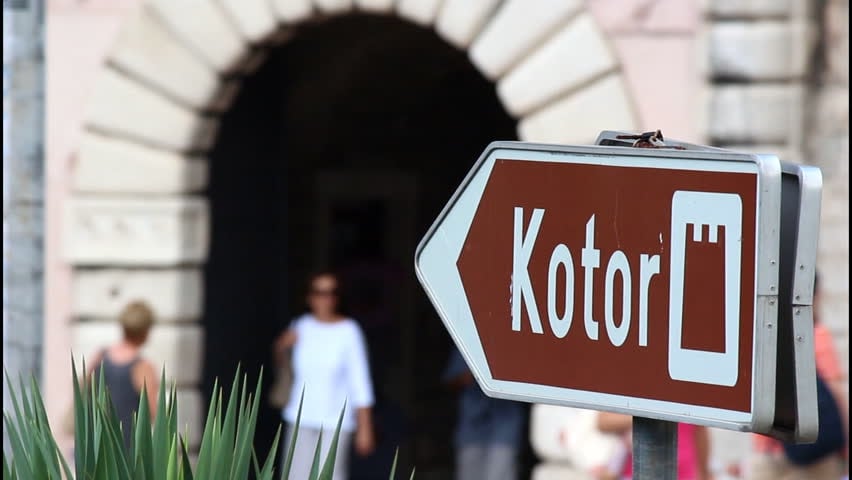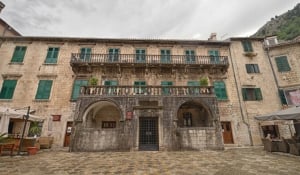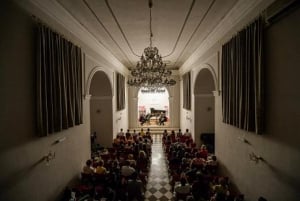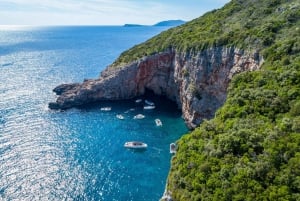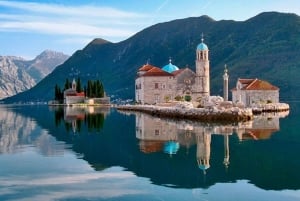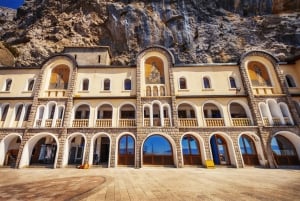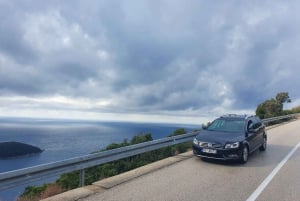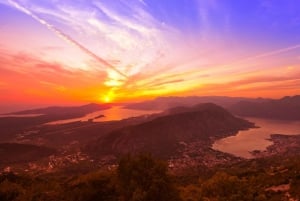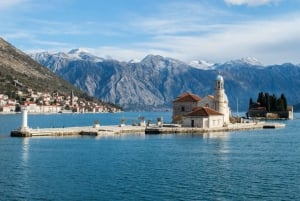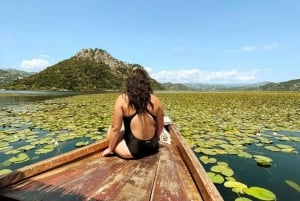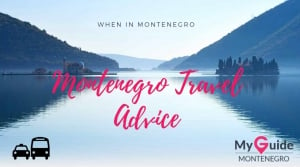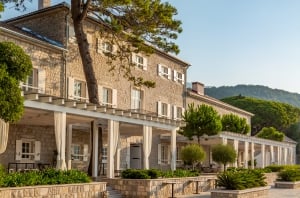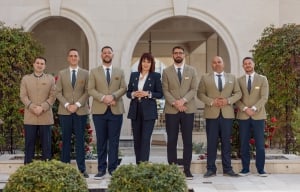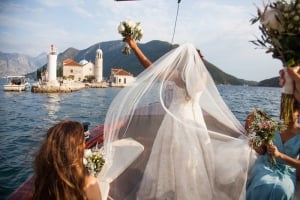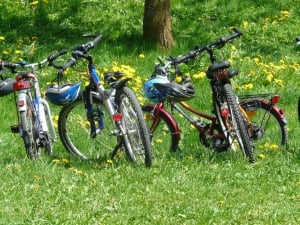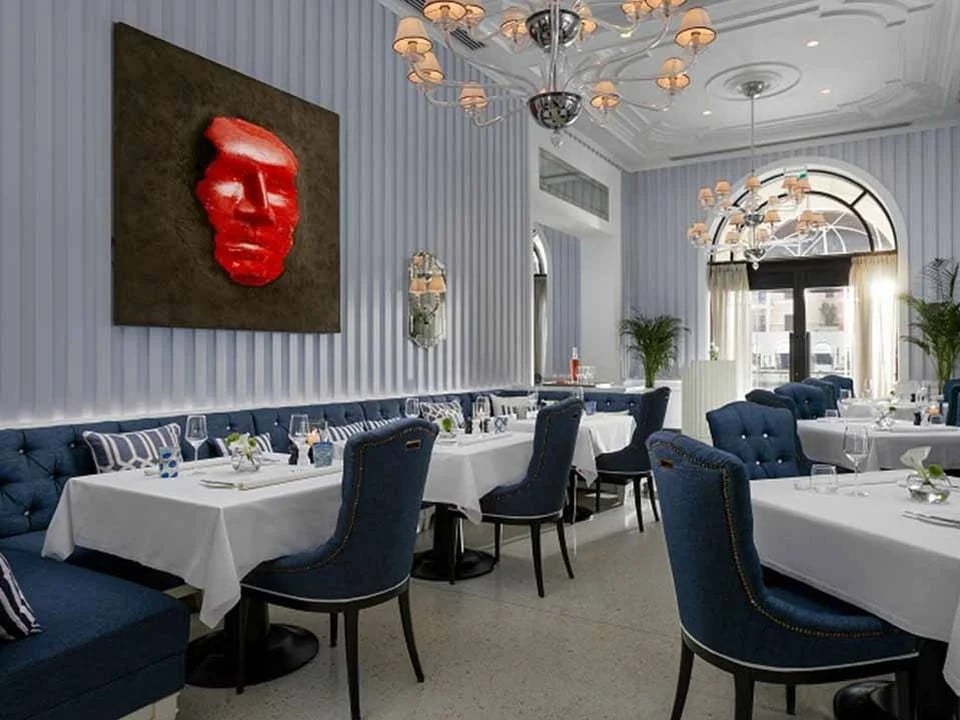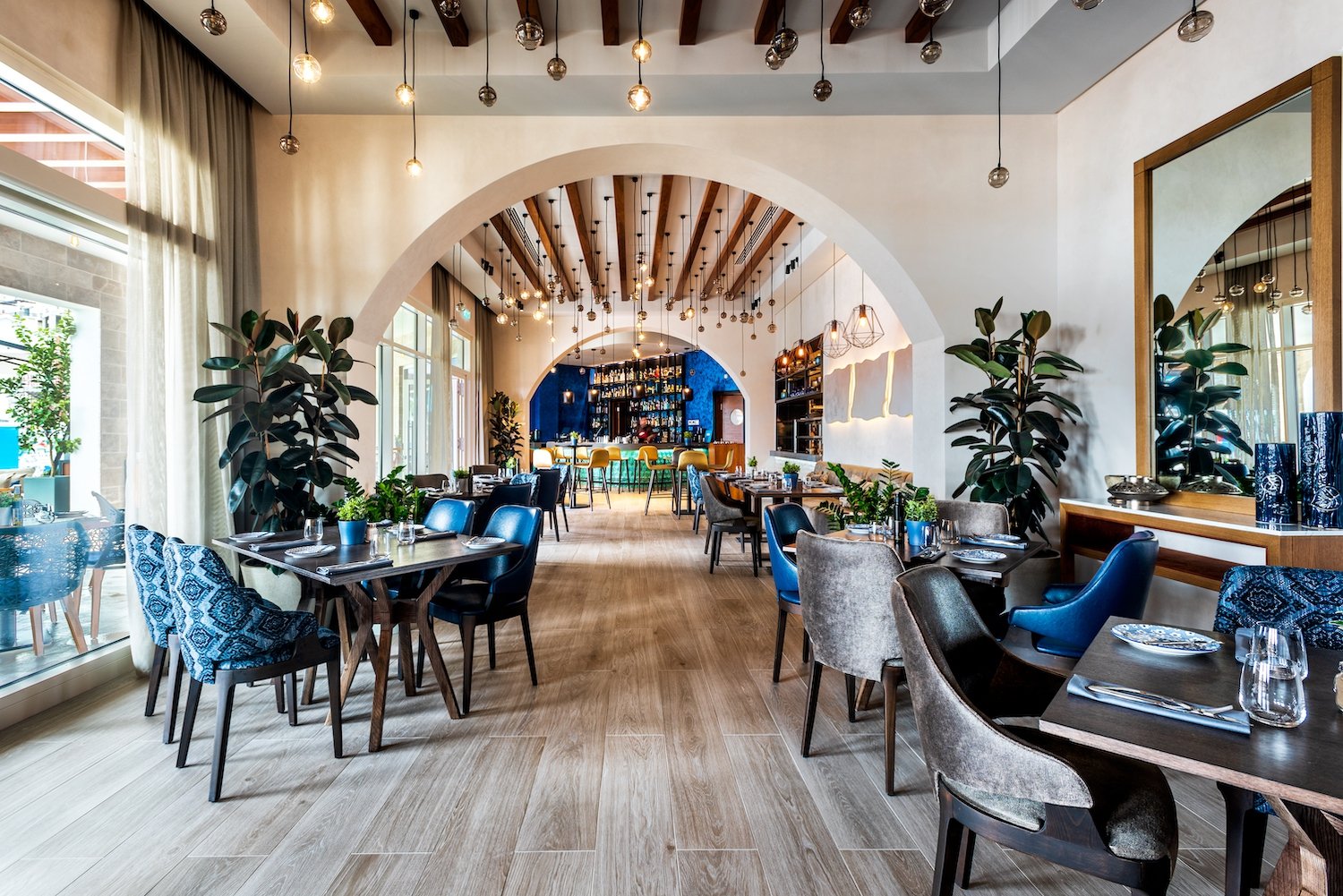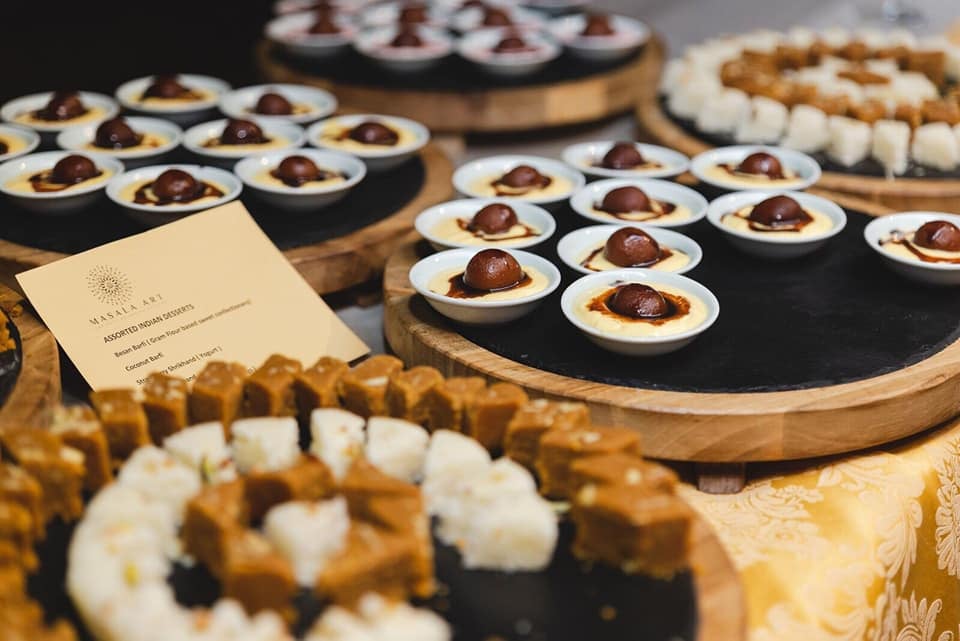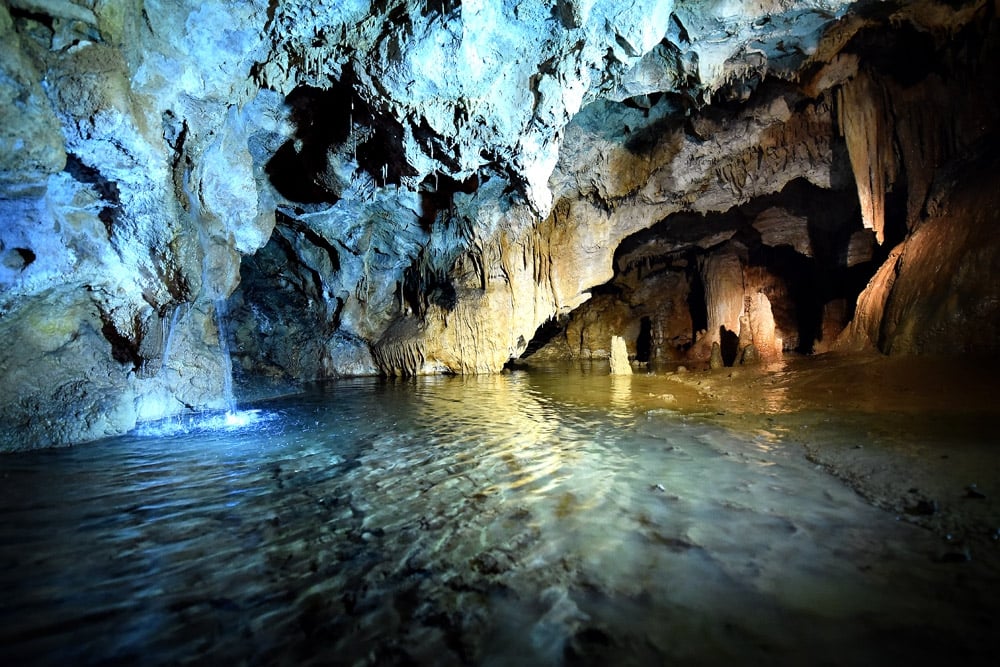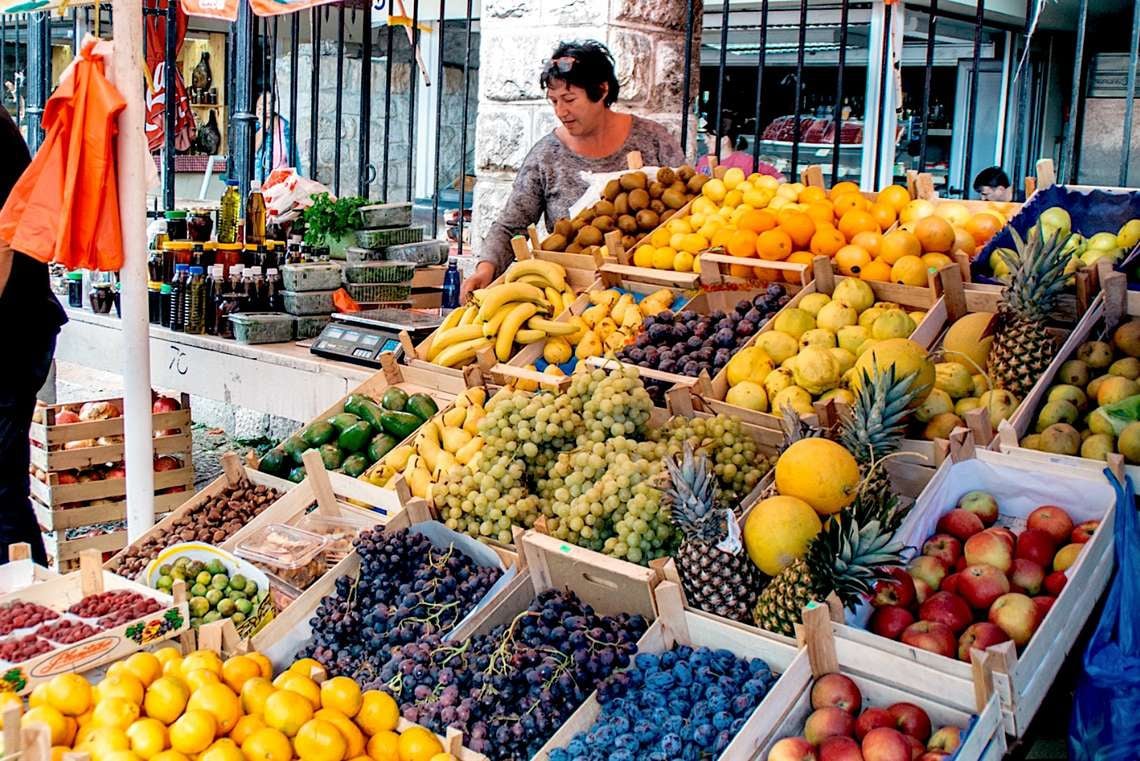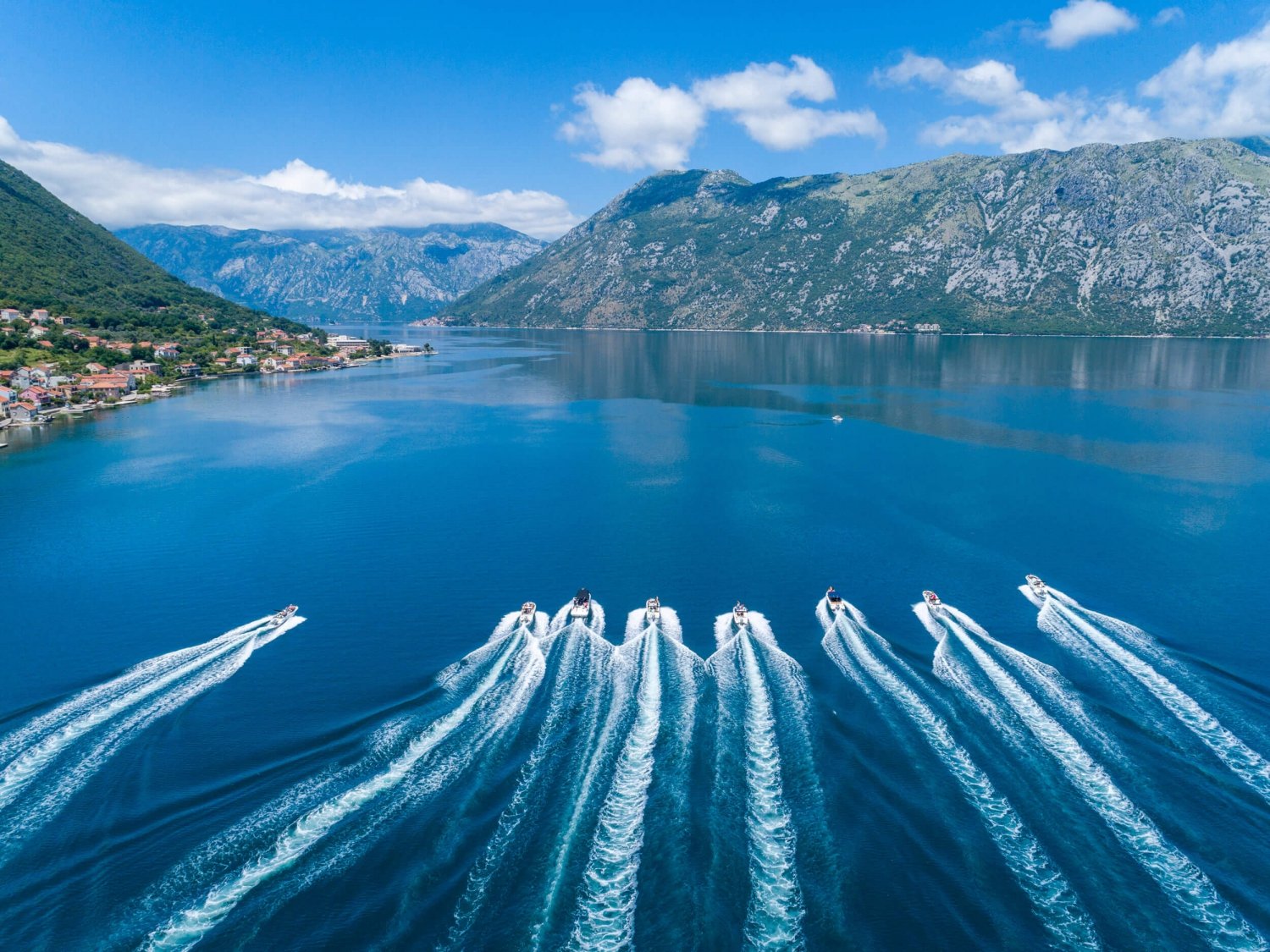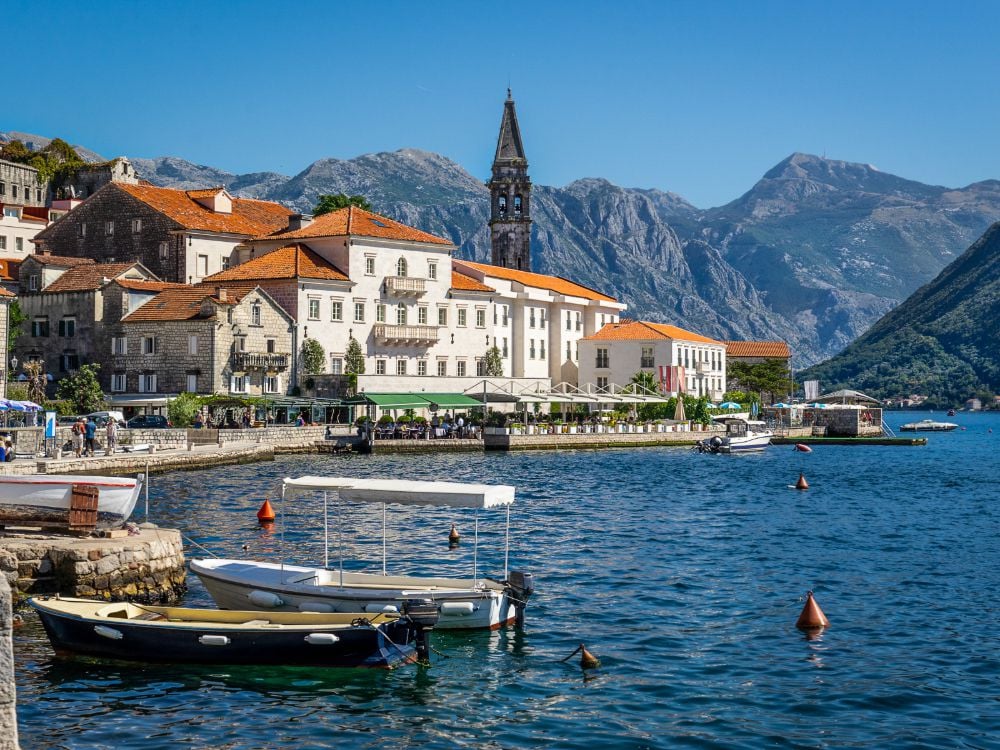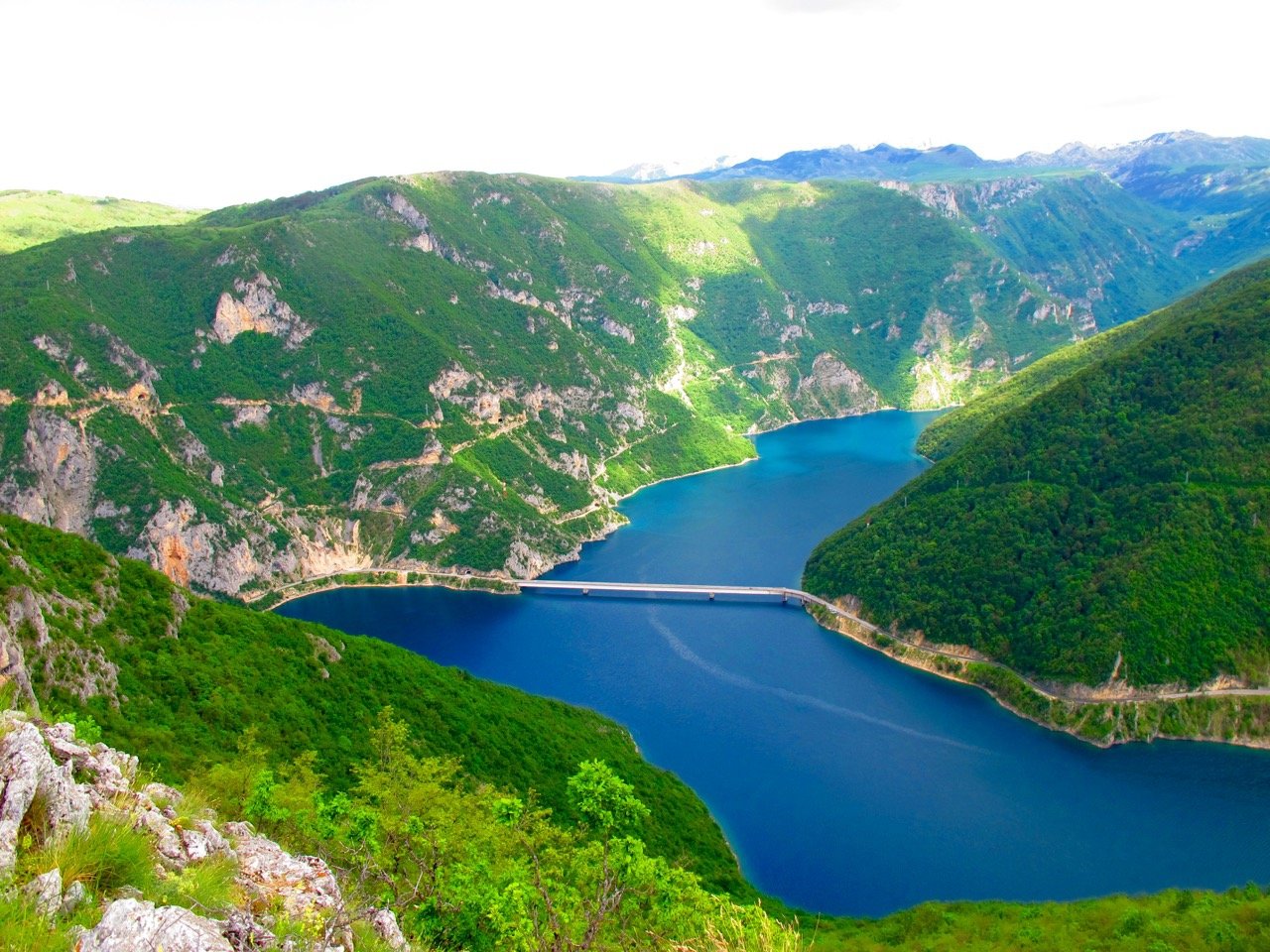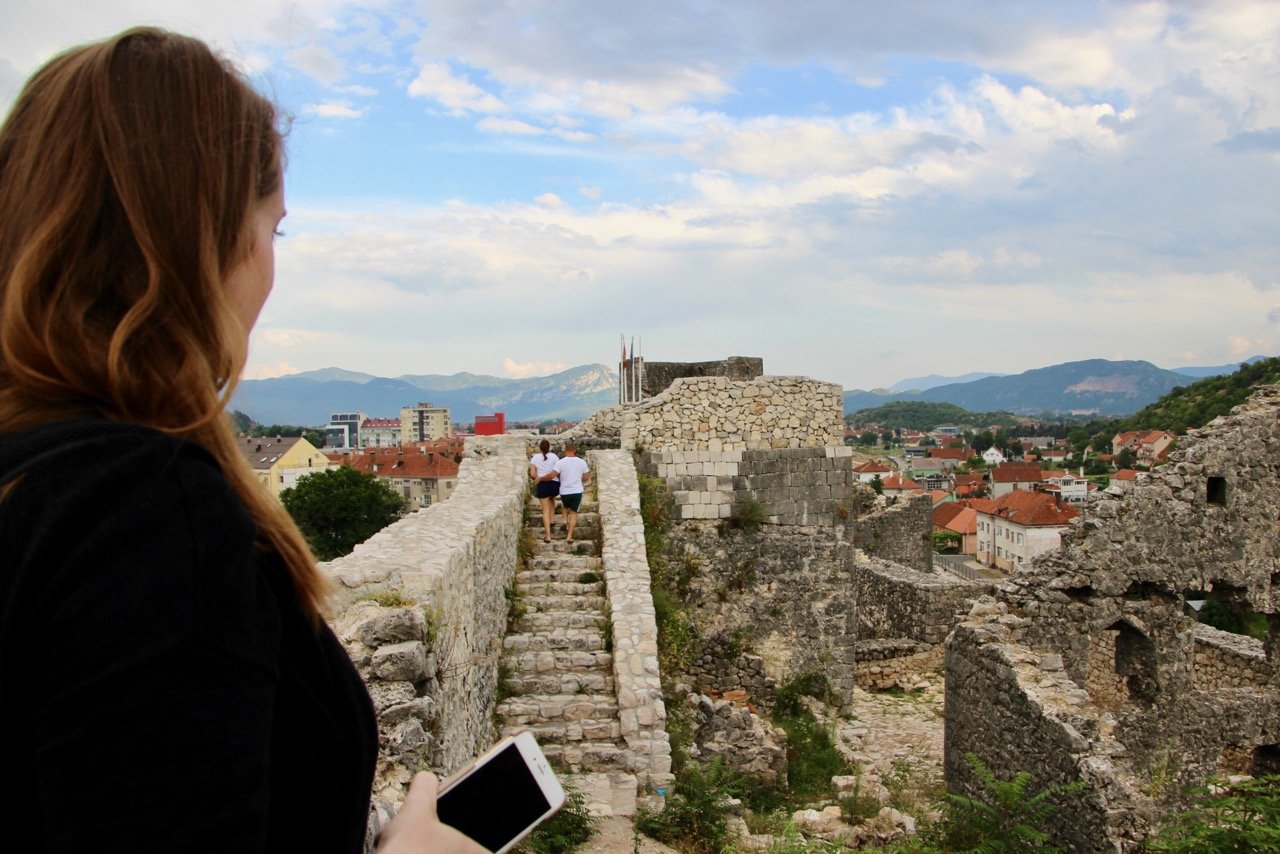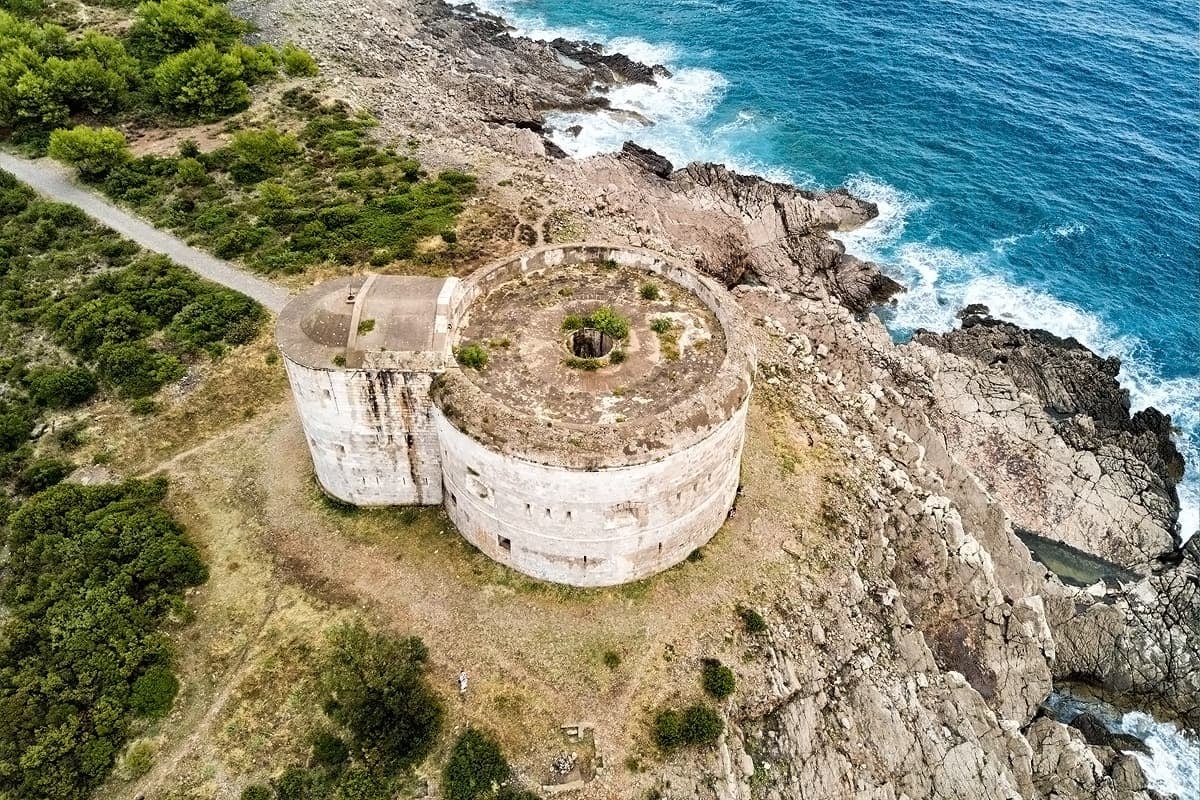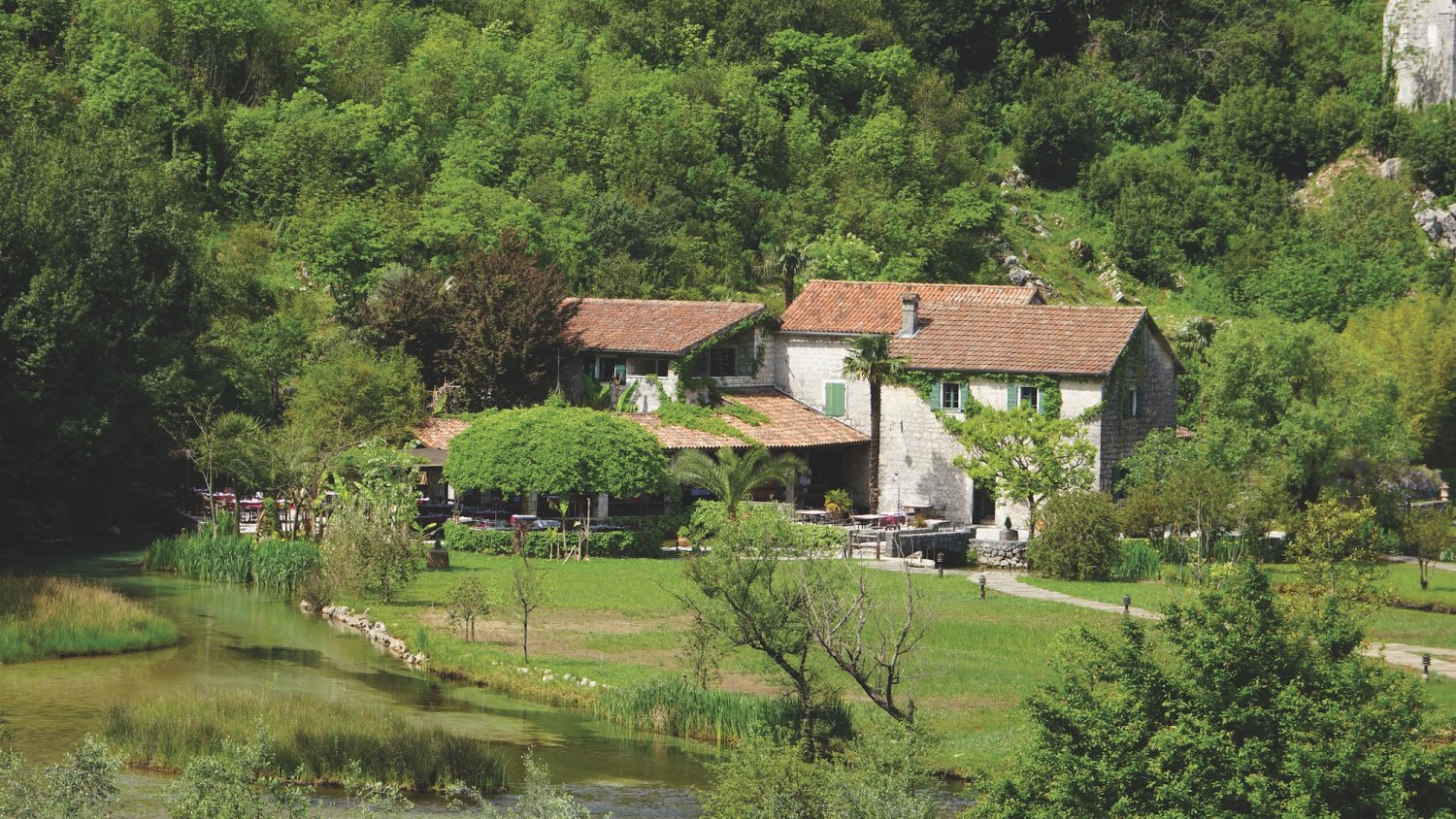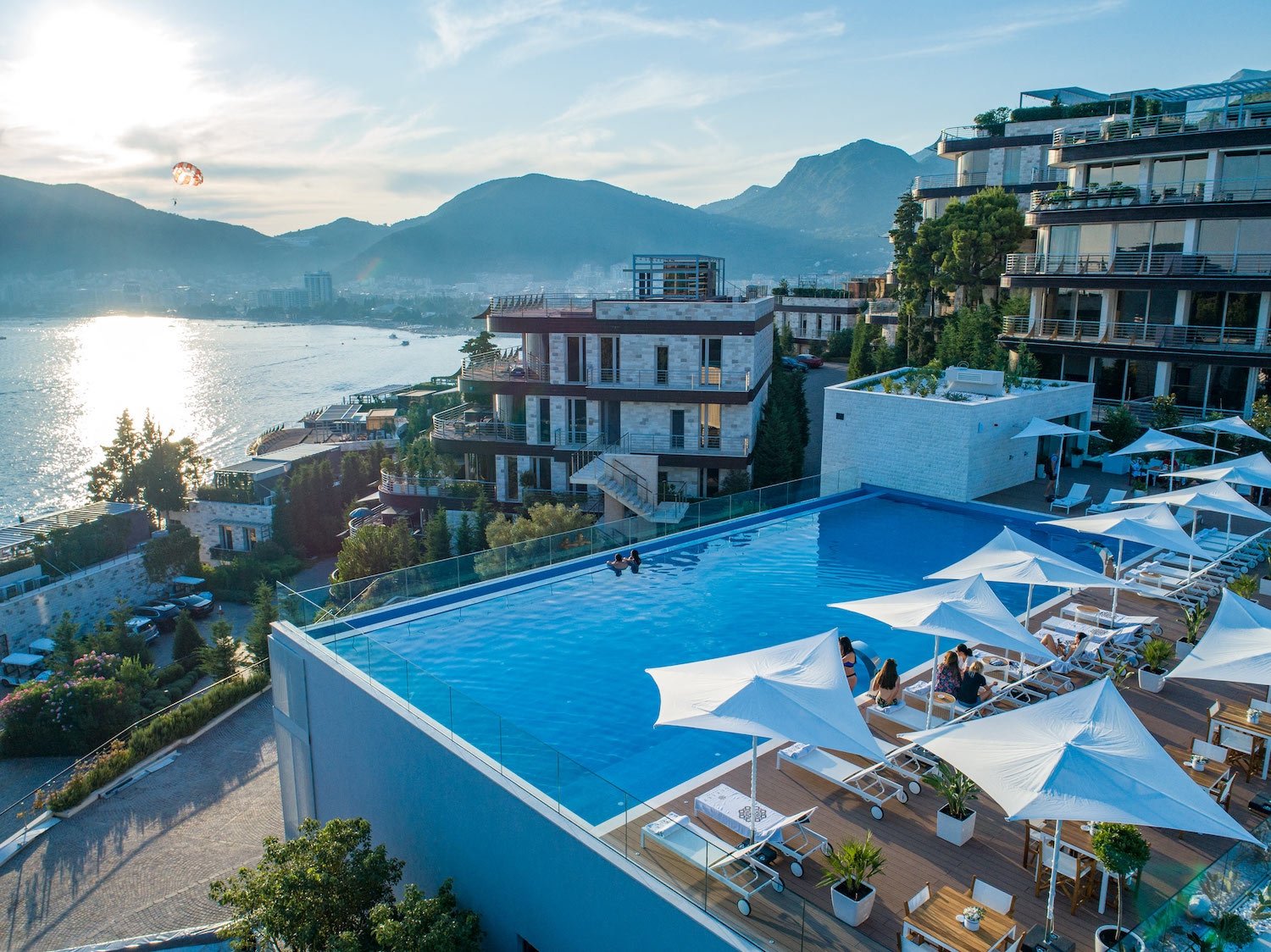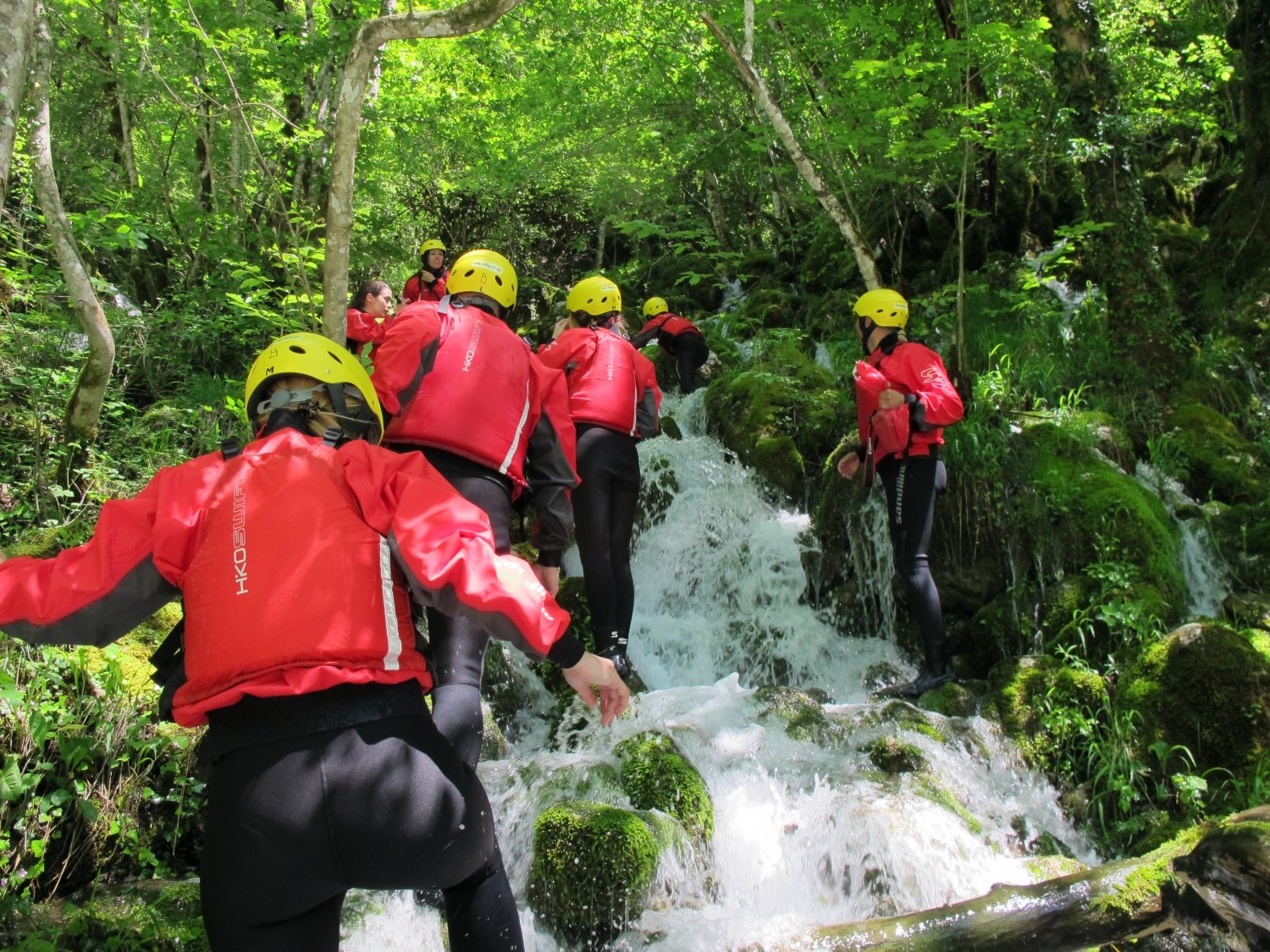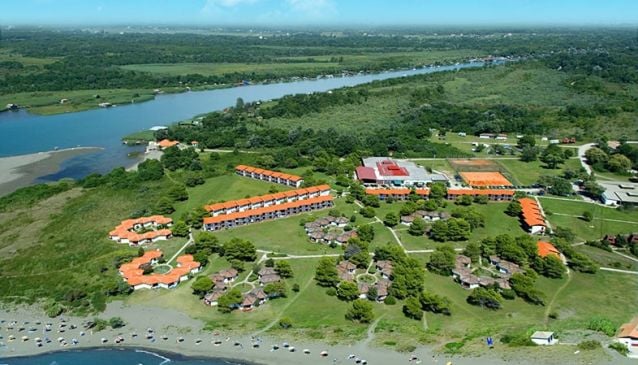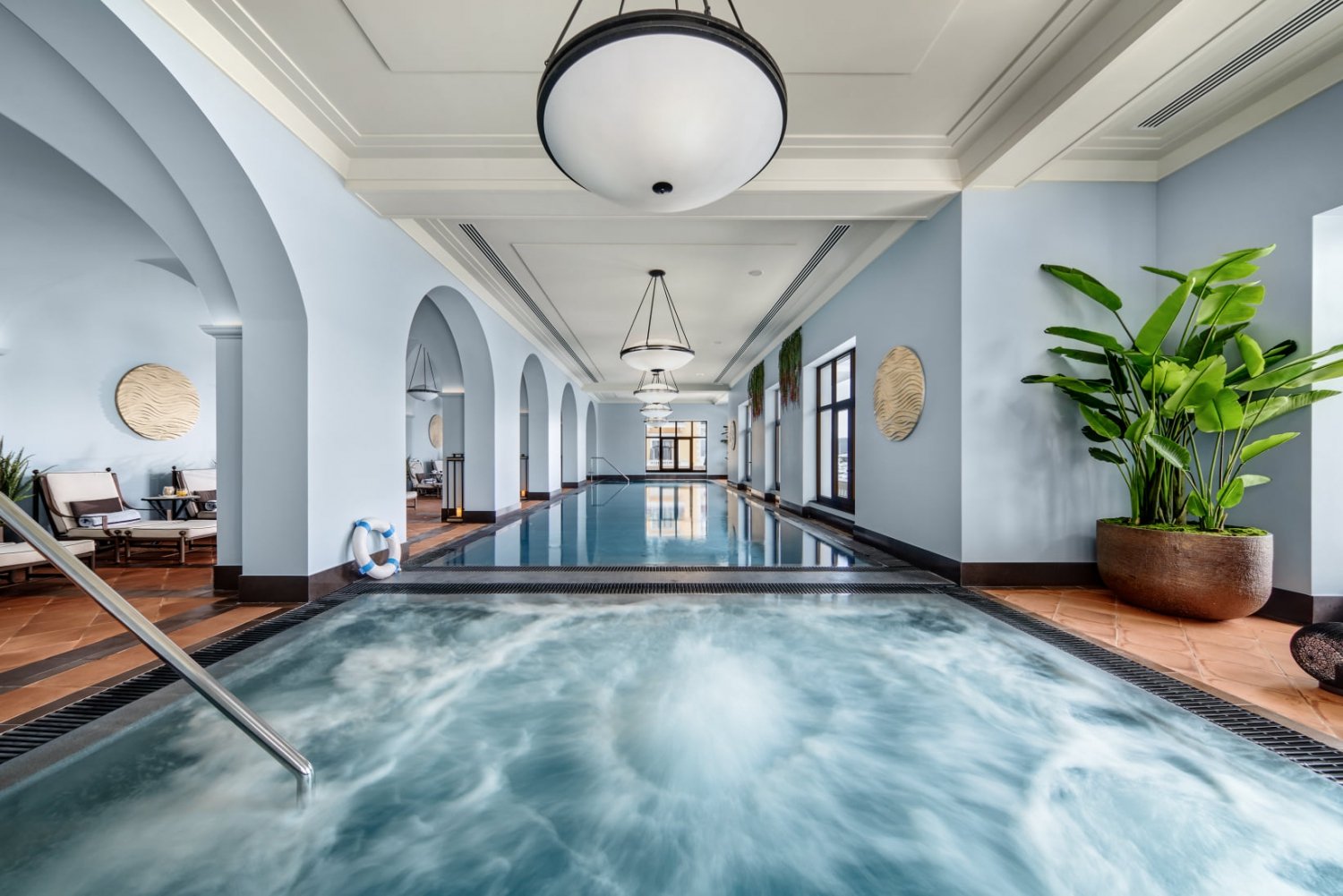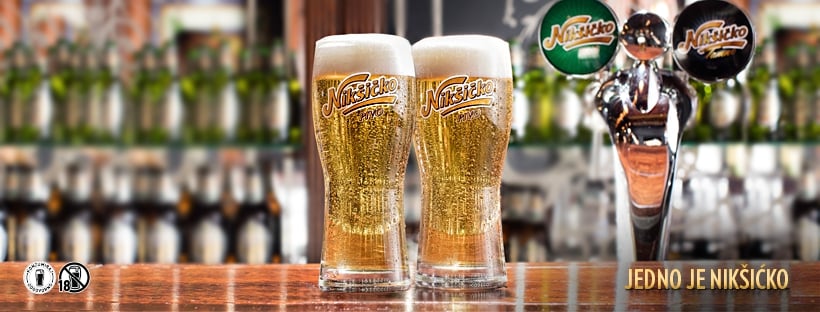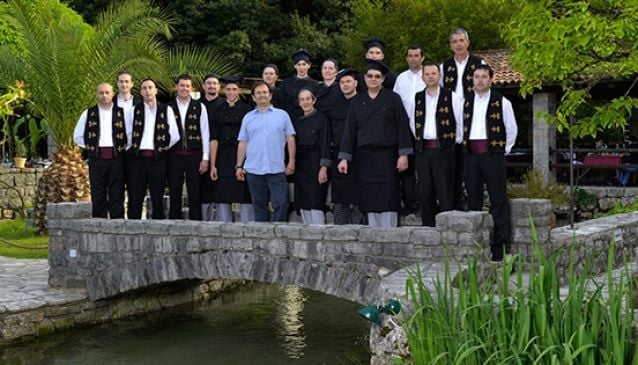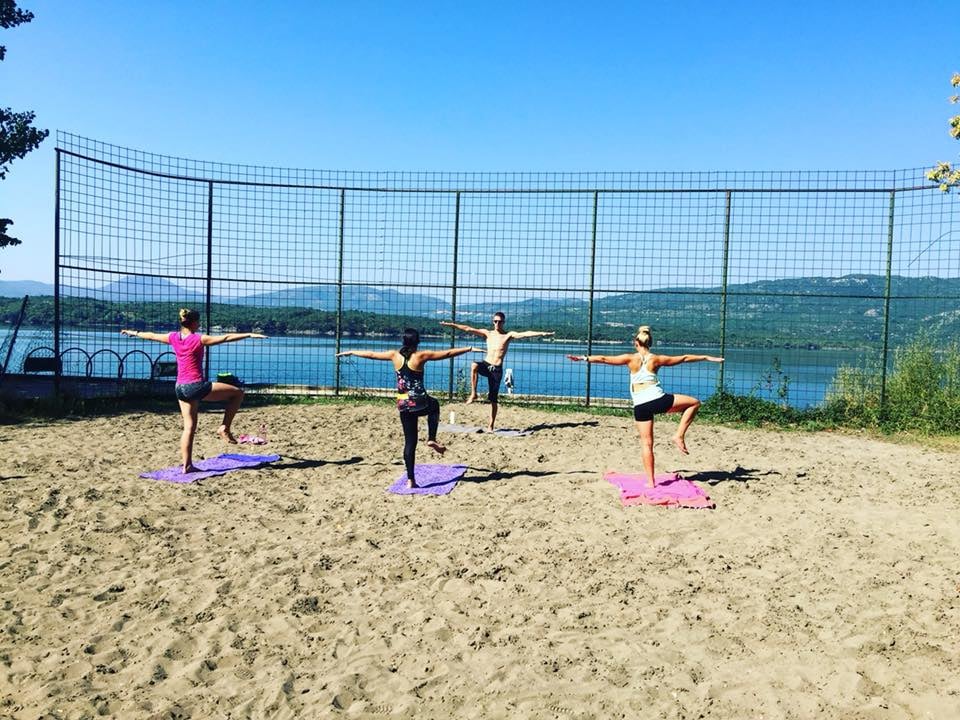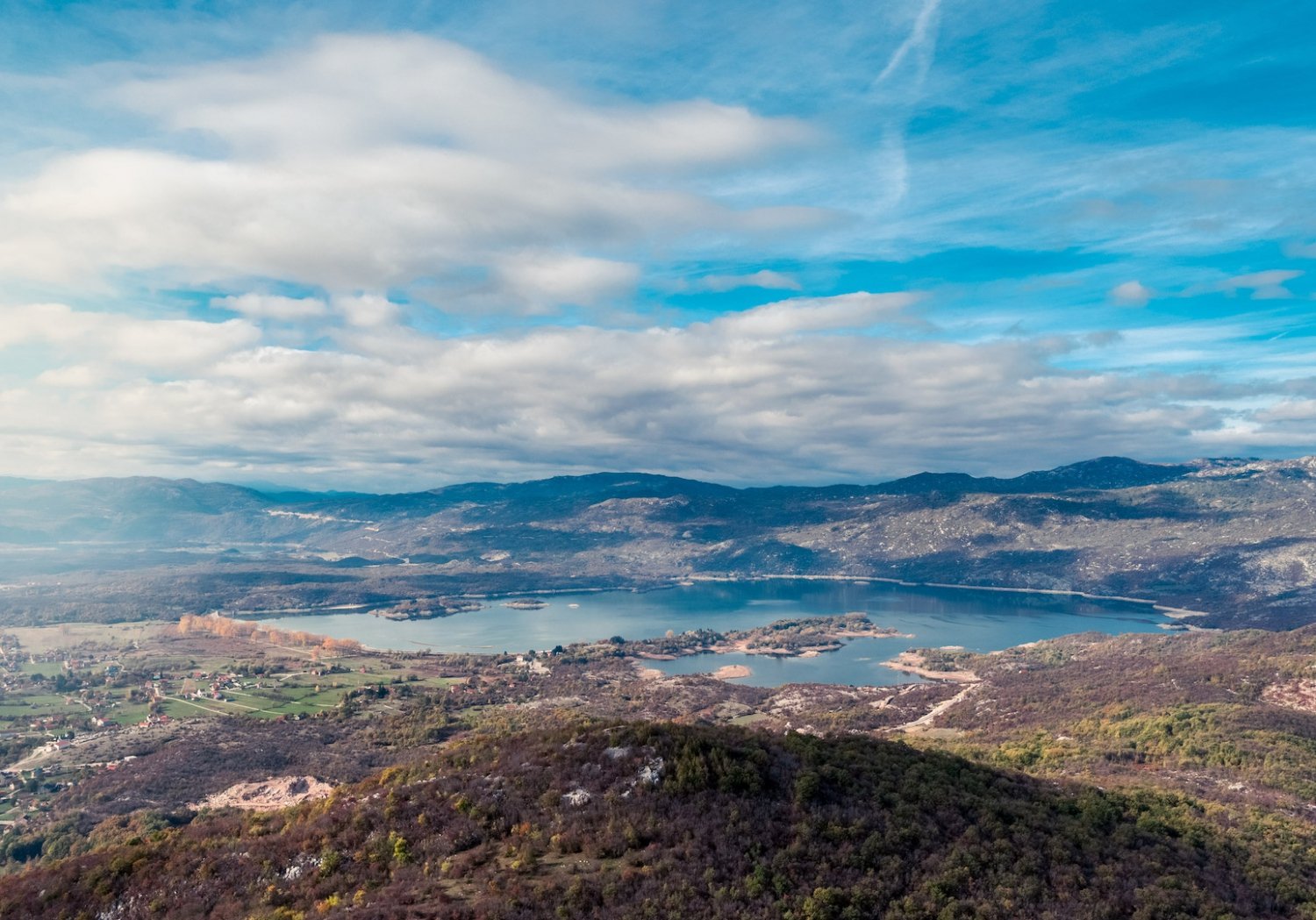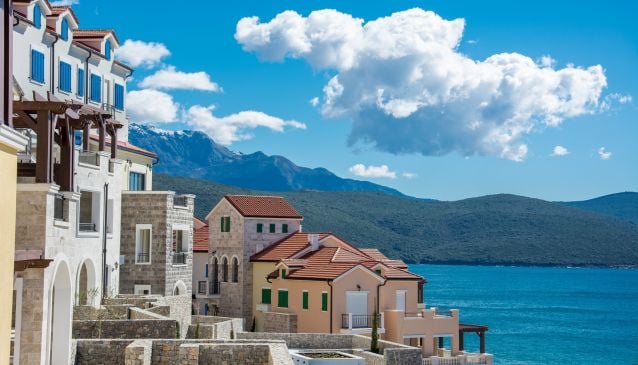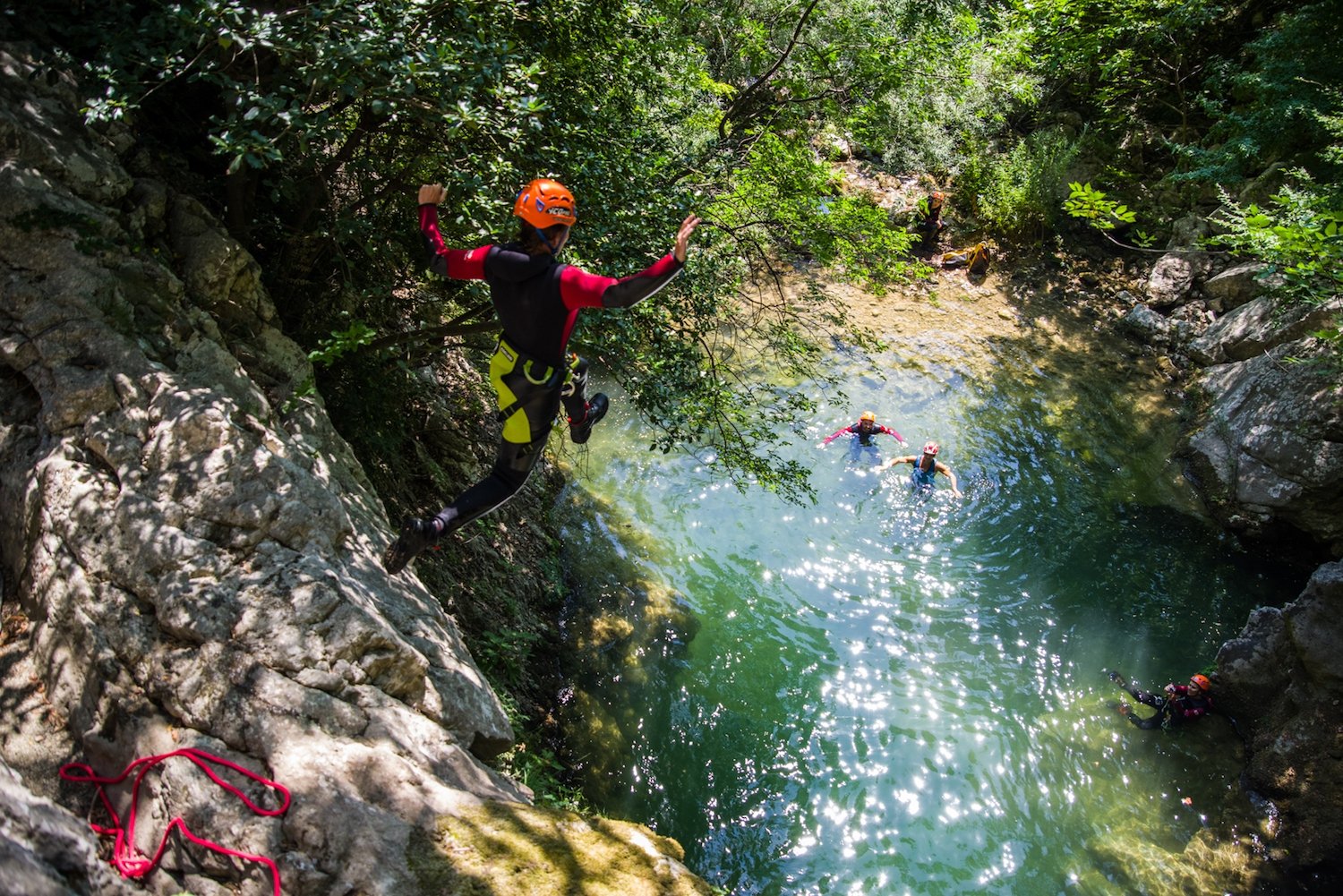The Old Town of Kotor
A top place to see while in Montenegro
Book Top Experiences and Tours in Montenegro:
If youʻre booking your trip to Montenegro last minute, we have you covered. Below are some of the top tours and experiences!- Montenegro: Durmitor, Tara & Ostrog Monastery Day Trip
- Panoramic Boat Tour to Vranjina Monastery & Wine Tasting
- Lake Skadar: Guided Panoramic Boat Tour to Kom Monastery
- From Tirana or Durres: Private Transfer to Budva & Kotor
- From Dubrovnik: Montenegro Boat Tour from Perast to Kotor
We continue the story about Kotor that is an endless inspiration to us. Today we will try to give tour de Kotor Old town, telling you about the most important churches, squares and palaces, considering Kotor is one of the best preserved medieval parts of this area of the Mediterranean.
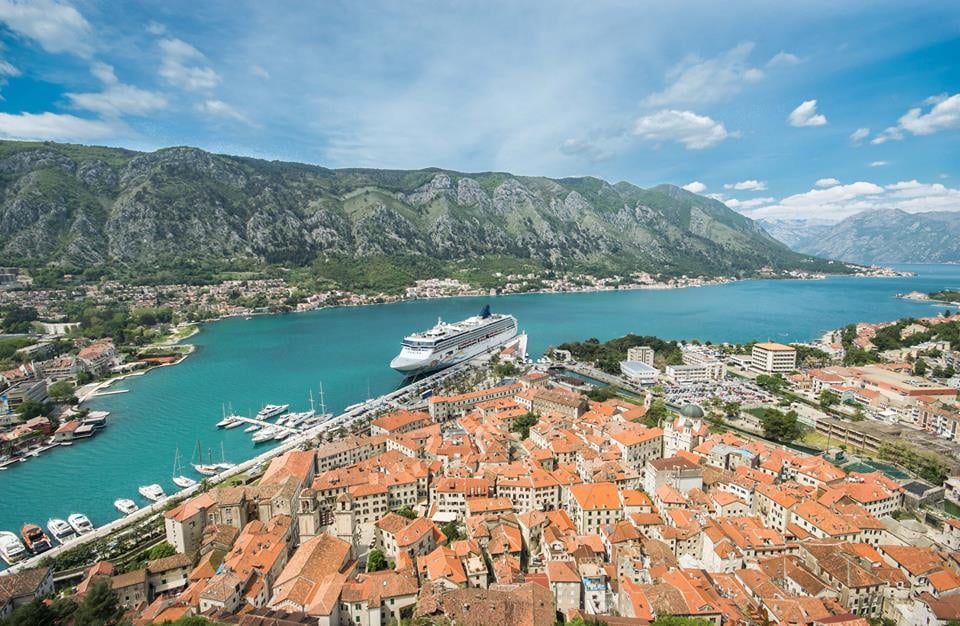 Old Town Kotor, source TO Kotor
Old Town Kotor, source TO KotorKotor Old town you can enter through three doors. The largest one is the western Sea Gate, originating from 1555 (during the Venetian reign) built in the renaissance-baroque style. In addition to this, there is the South Gate also known as the Gurdic gate, which is the oldest one - built in the 10th century. The third one is the north gate or the River Gate, representing the symbol of the win of Kotor over the fleet of the Turkish admiral Barbarosa back in the 16th century.
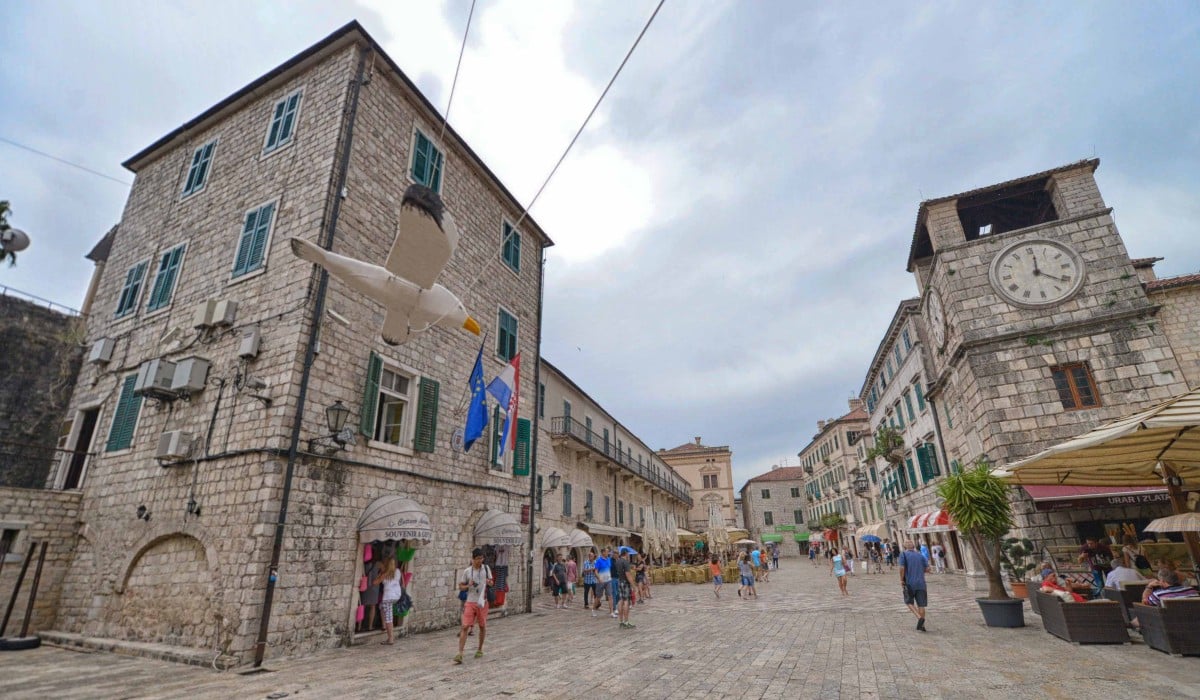 Main Square, source TO Kotor
Main Square, source TO KotorWhen you enter the city, through the main Sea Gate, you will see the largest city square, The Arms Square (Trg od oruzja). It has gotten its name because the weapons from the Venetian era were stored and placed here, especially in the nearby Arsenal building (today, there is a bank settled in this building). The Clock Tower, The Prince’s palace, the Arsenal Building and the Tower of the City Guard are located on this square.
 The Arsenal Building, source TO Kotor
The Arsenal Building, source TO KotorThe Clock Tower is one of the symbols of the city of Kotor and it was created in 1602, in baroque style. During the catastrophic earthquake in 1979, the tower was distorted a lot. Below the tower is the Pillar of Shame, which was used as a way of punishment, characteristic for that period of time. The defendants were put in front of the pillar of shame so that all citizens could find out about their delinquency.
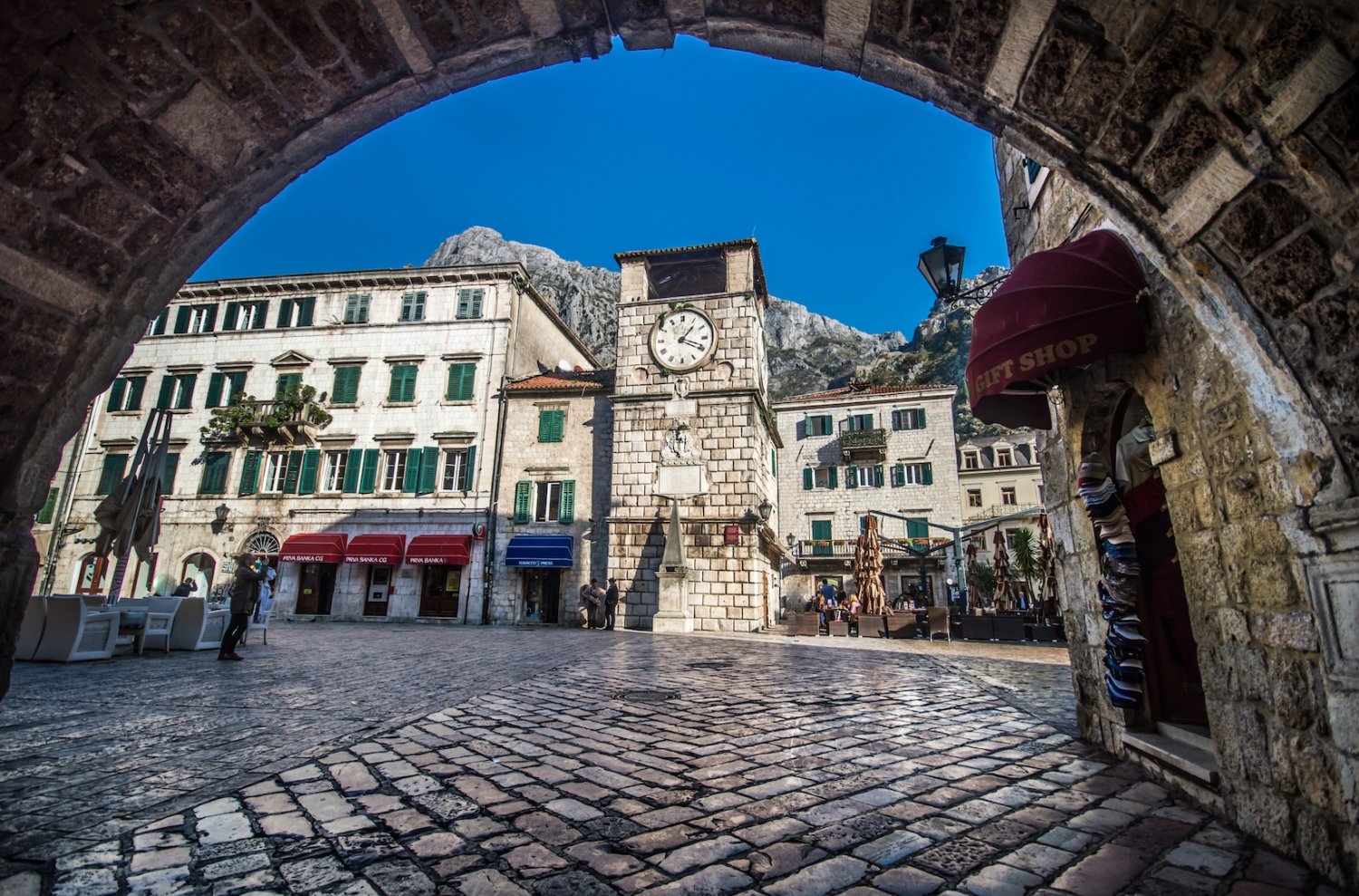 Clock Tower and the Pillar of Shame, source TO Kotor
Clock Tower and the Pillar of Shame, source TO KotorOne the same square, there is the Prince’s Palace - a large building, built in the 18th century and used in military services, was once the official place of the Venetian rulers. Although it does not have many architectural ornaments, it represents one of the significant architectural monuments of Kotor.
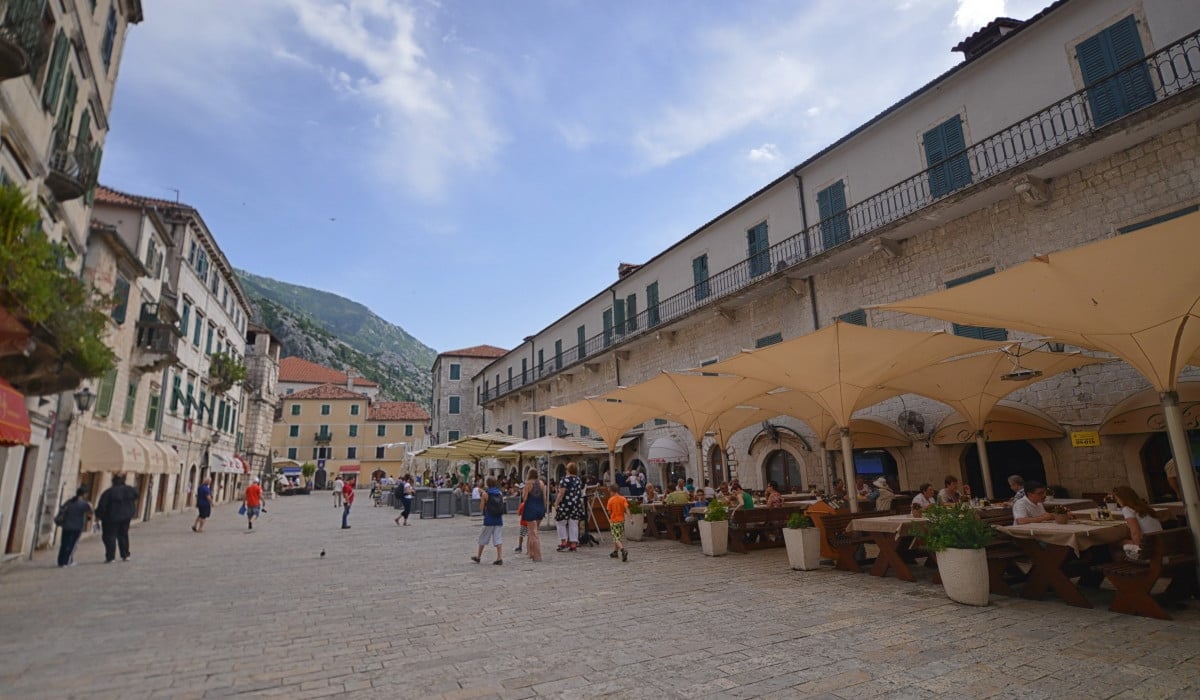 Prince's Palace, source TO Kotor
Prince's Palace, source TO KotorLooking one way towards the Arms Square and the other way towards the Square of Flour, you can see the Bizanti Palace. The 1667 earthquake significantly changed its appearance. Windows, portals, stairs and the draw-well with the family’s Coat of Arms have characteristics of baroque.
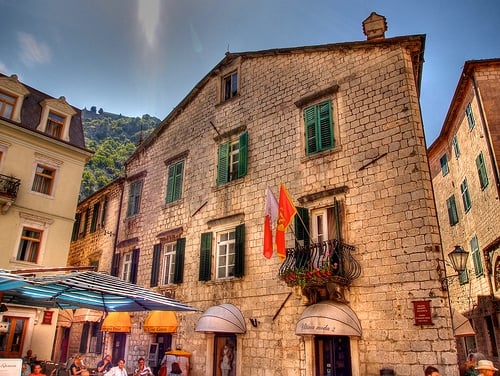
Bizanti Palace, source TO Kotor
Walking off the Bizanti Palace, you will come to the Square of Flour that was named after the flour warehouses, which were previously located there. Palaces of the noble families Pima and Buća are located here.
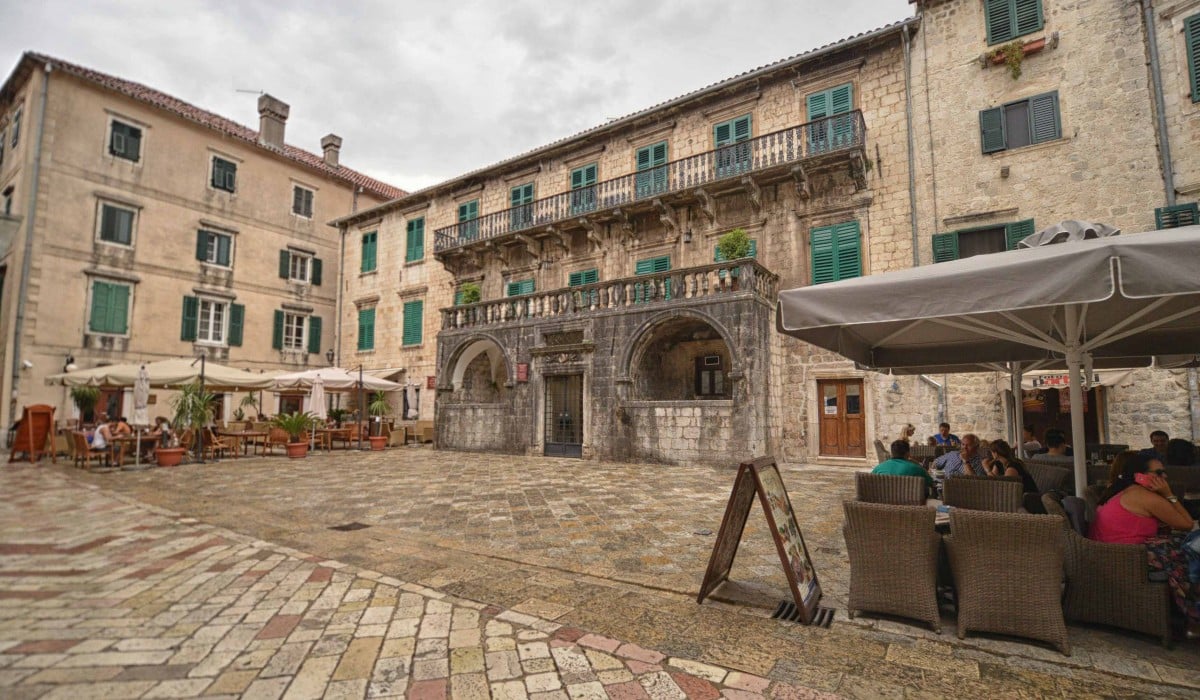 Pima Palace at the Square of Flour, source TO Kotor
Pima Palace at the Square of Flour, source TO KotorThe Palace Pima, known for its beauty, originates from the 17th century, but it was reconstructed after the 1979 earthquake. The most beautiful detail of the palace is the balcony, supported by the 12 stone panels, and above the main portal, there is the Coat of Arms of the Pima family that is being held by two angels. Right across this palace, there is another one called Palace Buća, back from the 14th century. From the once pompous gothic palace, today only one bifora has left, that can be seen from the city walls. This is the current location of the one of the most charming small hotels in Kotor, called Astoria. A place where you can enjoy international cuisine and endlessly interesting interior design based on the Ancient Greece alphabet.
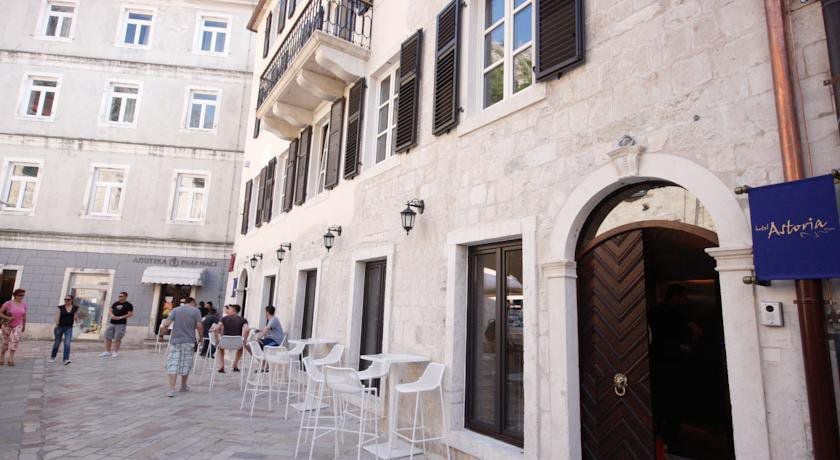 Hotel Astoria located inside an old Buca Palace, source TO Kotor
Hotel Astoria located inside an old Buca Palace, source TO KotorContinuing the walk around the Old town next on is the Saint Tryphon's Square, where the most significant institutions of the town are located. One of them is the Saint Tryphon Cathedral. Saint Tryphon Cathedral is certainly the most beautiful and most important sacral monument in the city that was built and renovated in 1166. Earthquakes significantly changed the original appearance of the cathedral. For example, the Roman bells and the dome were replaced with new ones, designed in a more baroque style. What is especially attractive are the rosettes on the facade that were once Romanesque, but today they are profiled by Gothic-Renaissance motifs. This Cathedral represents a rich treasury of art paintings, including work of local painters as well as the foreign artists. Greek masters painted the interior of the Cathedral with frescoes. Also, the Romanesque-Gothic Ciborium from the 14th century is one of the most beautiful parts of the Cathedral.
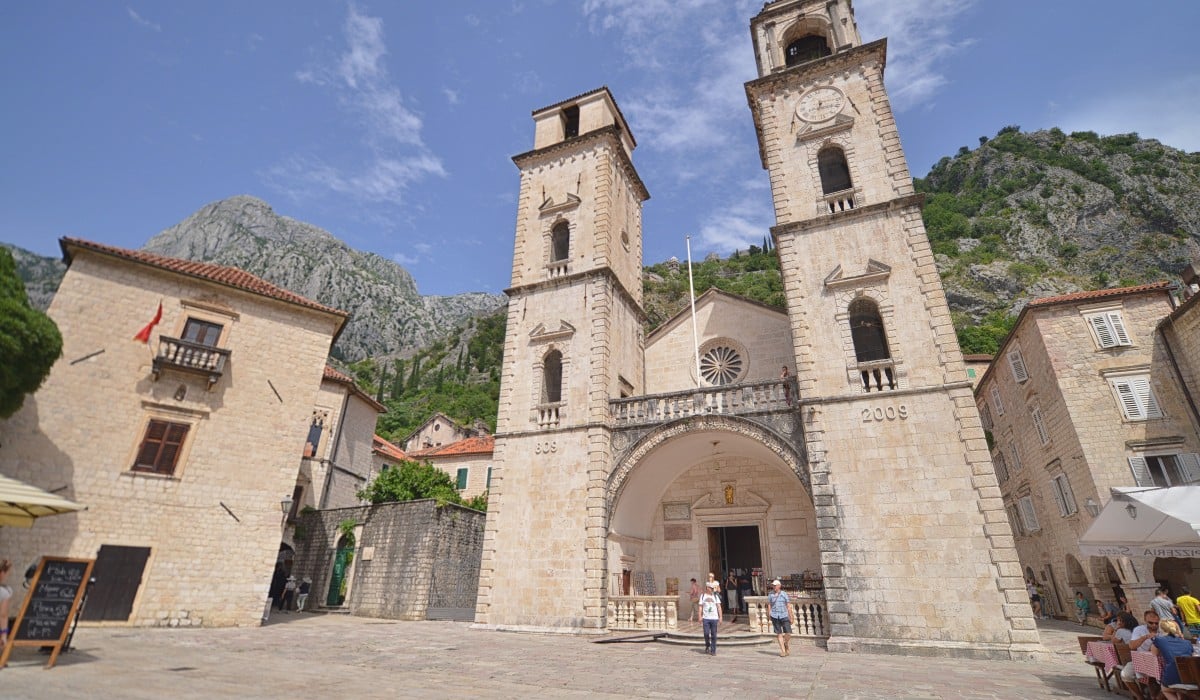 The Cathedral and Drago Palace, source TO Kotor
The Cathedral and Drago Palace, source TO KotorBesides the Cathedral, there is also the Drago Palace, built in the 14th and 15th century, with the gothic elements. It has been damaged during the earthquakes, but today it consists of the southern and northern wing, and the windows of the palace are nicely shaped and profiled.
Walking through a volat (passage) on your right you will come to the Square of Salad formed in the part of the town that was directly connected to the area where the vegetables were grown. One great recommendation for your visit to Kotor and walking around this square is the restaurant Scala Santa, listed as one of the oldest restaurants in Kotor, offering amazing food and atmosphere.
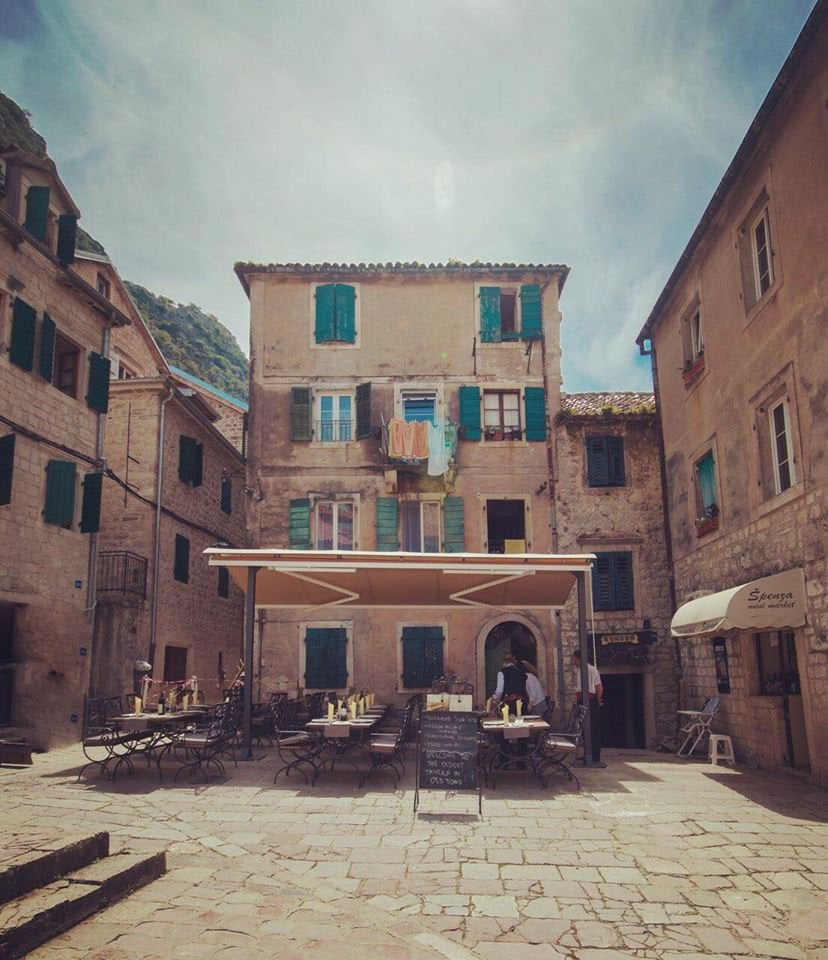 Restaurant Scala Santa and the Square of Salad, source TO Kotor
Restaurant Scala Santa and the Square of Salad, source TO KotorWe cannot forget to mention the buildings of the Old Prison and the Theatre. One of the largest buildings in the Old Town of Kotor, which is a unique cultural monument, is the Old Prison building. The Prison was built by Hungaro-Austria in the middle of the 19th century and was used for many years as a place for punishments. Today, every summer, as a part of the famous event Kotor Art, the summer school of architecture is being held here, known as Kotor APPS.
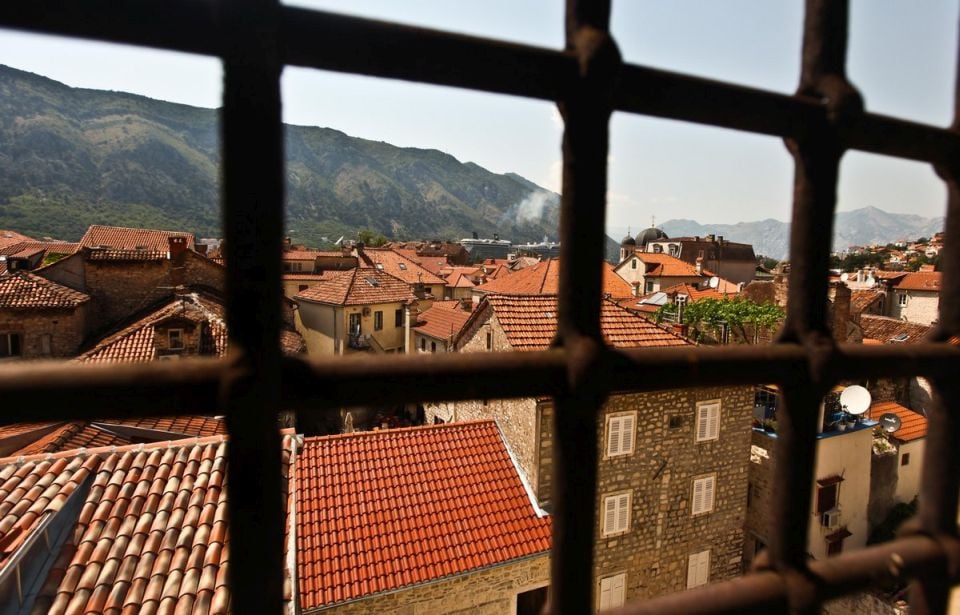 View over the city roofs from the Old Prison, source TO Kotor
View over the city roofs from the Old Prison, source TO Kotor The building of Napoleon's Theatre or the City Theatre was built in the 18th century. The French occupying authorities have completely rebuilt this building to establish a permanent theatre, one amongst the first in our country. Today, Culture Centre Nikola Djurkovic is a very important institution that is not only included in the theatre activities but also in numerous events, such as Carnivals and Boka night for instance but also various workshops, dance troupes etc.
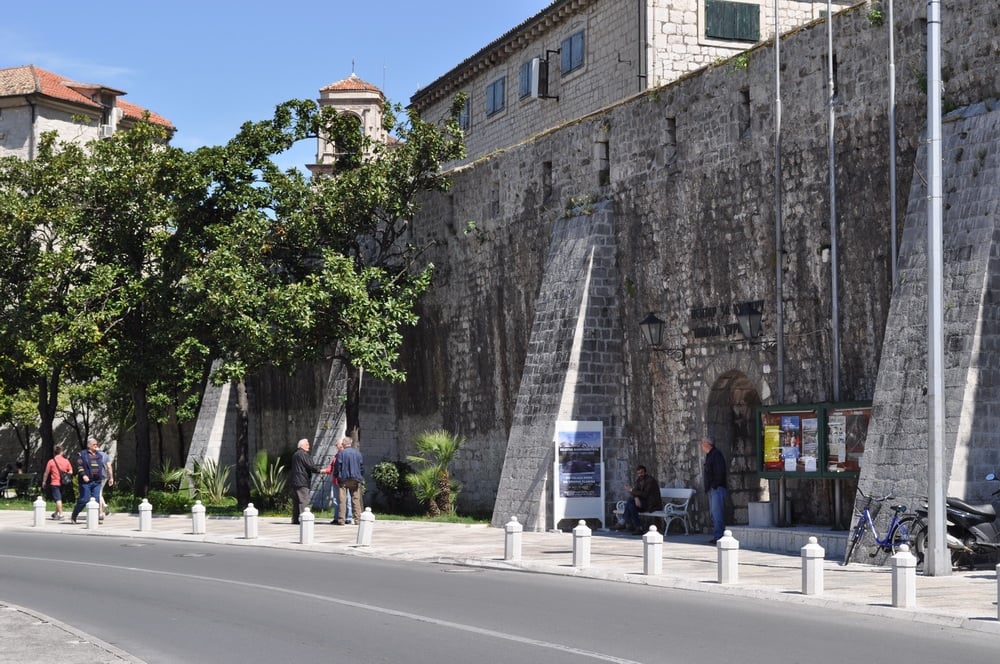 The Entrance to the Theatre, source TO Kotor
The Entrance to the Theatre, source TO KotorAs we stroll around the city we are coming to another important square, the Square of Museum or the Boka Naval Square, which occupies a central position in the central part of the city. Amongst the most important buildings here, we have the baroque palace Grgurina, in which the Maritime Museum of Montenegro is located. The Grgurina Palace dates from the 18th century and it used to belong to the Grgurina family of nobles. What is quite interesting is that the original arrangement of the rooms, based on the Venetian principle, has been saved until today and it says that “The house of one master has four rooms and one saloon.”
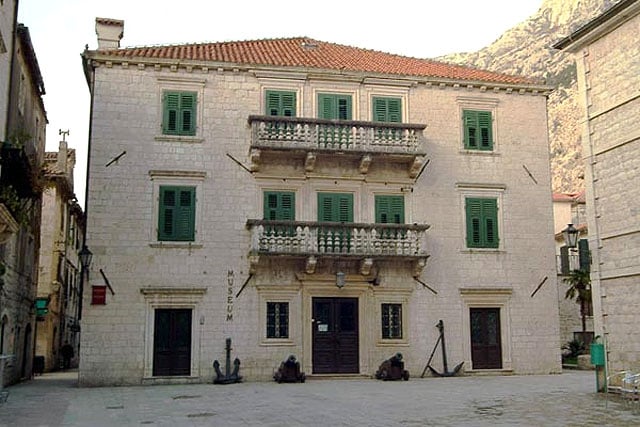 Grgurina Palace which is the Maritime Museum today, source TO Kotor
Grgurina Palace which is the Maritime Museum today, source TO KotorFurther on, at the Square of Saint Luka, you can see two Orthodox churches. The small one and one of the most charming buildings in the Old town, the Church of Saint Luka, is located in the heart of Kotor, built in 1195. By the mid-17th century, this was a Catholic church, after which it was handed over to the Orthodox inhabitants of Kotor, however, the Catholics retained the right to an altar. This is the only building in the city that has not suffered significant damage during the earthquake. The floor in the church is made of tombstones of the citizens of Kotor because until the 1930s the burials were carried out in the church itself.
If you need a break from this amazing sightseeing, try and walk behind the Saint Luka's church, where you will find another 'piazzeta' called The Milk Square and a great restaurant called Trpeza with delicious seafood specialties.
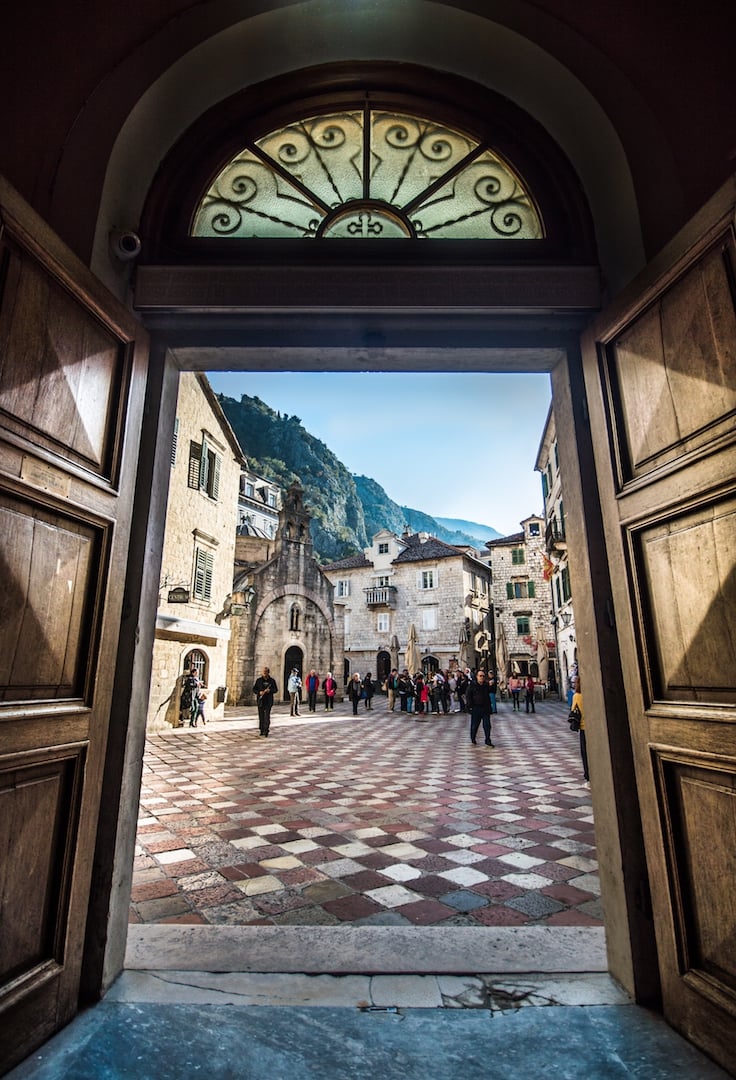 Look towards the church of Saint Luka from the Saint Nikola church, source TO Kotor
Look towards the church of Saint Luka from the Saint Nikola church, source TO KotorOn the right side, you can see the church of Saint Nikola, recently re-built at the place of the old Dominican church of Saint Nikola, from the 16th century. Now built in the Serbian-Byzantine style, it has a rich collection of icons. Also, in the back of this square, there is a small church of the Saint Spirit, built in the 15th century, and today used as the Concert Auditorium for the Music School Vida Matjan, also located on this square.
This square has a specific charm and it leads you towards the main square - Square of Arms if you turn left, or towards the Tabacina or River Gate, if you turn right.
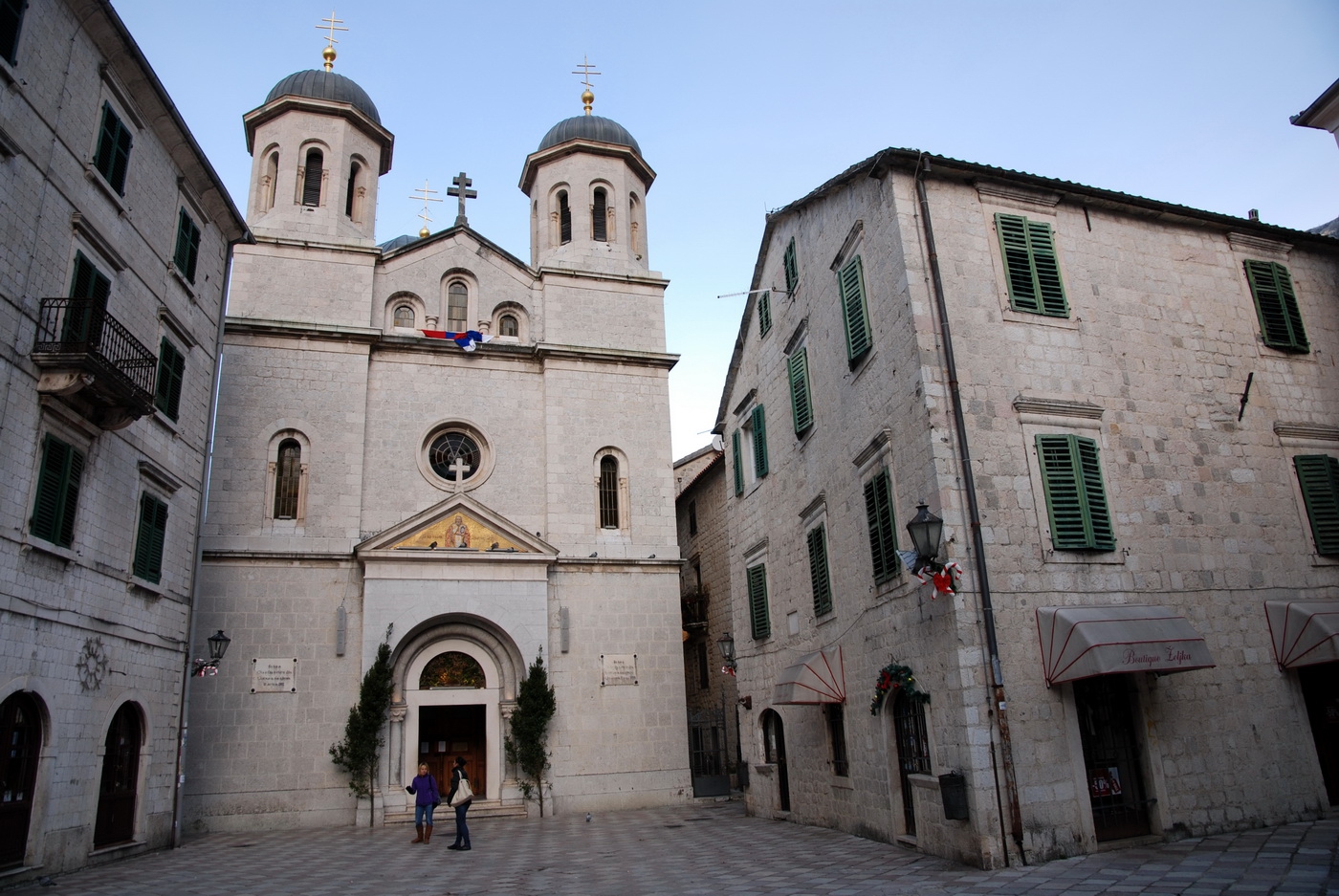 Saint Nikola Church, source TO Kotor
Saint Nikola Church, source TO KotorTabacina, the small settlement outside the Old Town, was also well known through the history and the name is derived from the word tobacco, as this was a spot for a trade market and tobacco market. Kotor was always known as a harbour and numerous ships were sailing into this port from all around the world. Montenegrins were coming from Cetinje to this market, using the road over the fortress and arriving on donkeys. Traders from the cruise ships were selling tobacco and other international product that were not available in Montenegro at that time. This fact added more importance to Kotor as an international spot in Montenegro.
 Tabacina Gate, source TO Kotor
Tabacina Gate, source TO KotorSAN GIOVANNI FORTRESS - City walls of Kotor
One of the most important and most attractive symbols of Kotor is San Giovanni Fortress. This “great wall of Kotor” is long about 4,5 kilometres and it stands for a big attraction to foreigners that visit our country. The fortress is visited, at the prime of the summer season, by 150 tourists daily and the daily pass is 8 € per person.
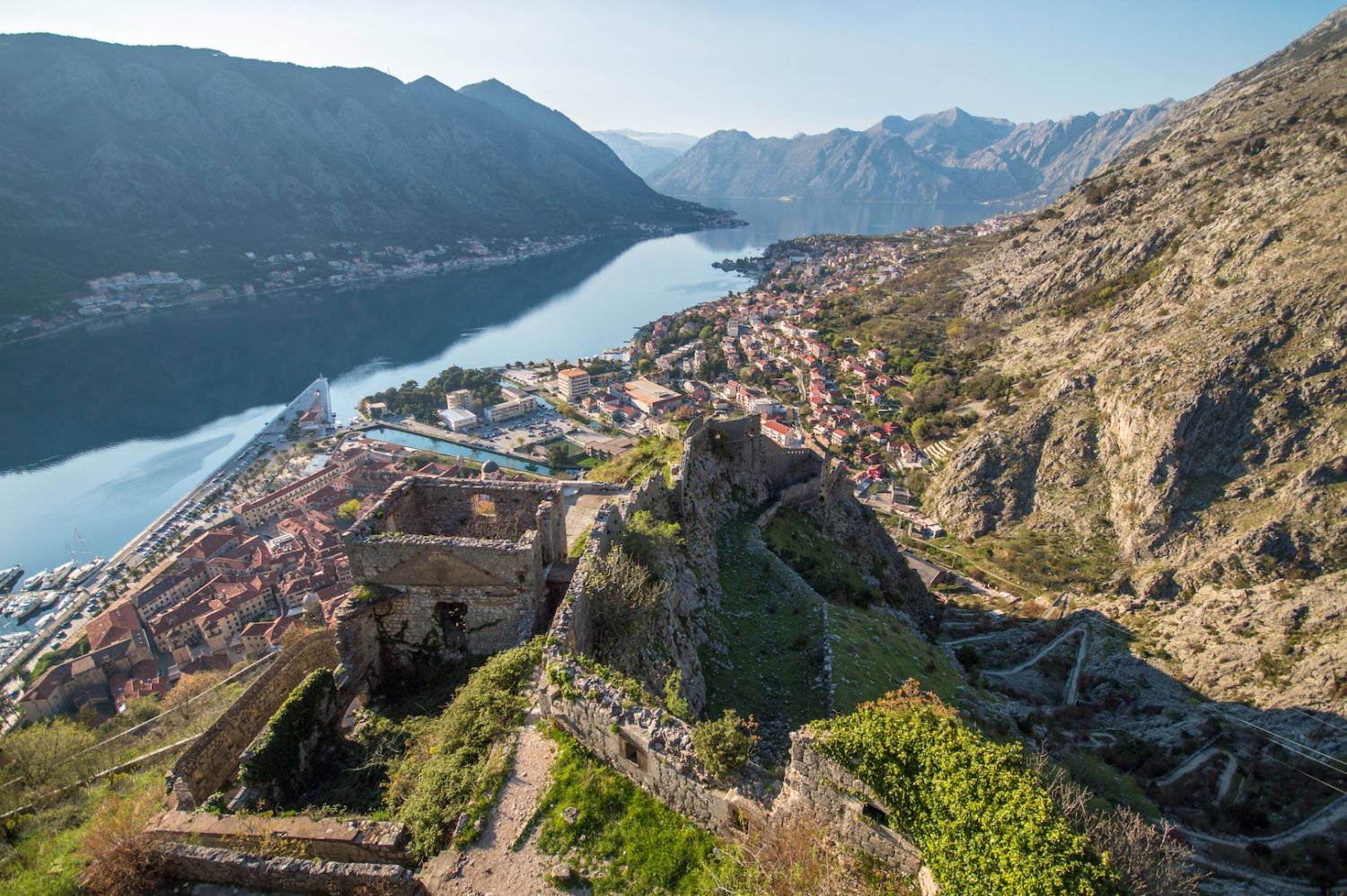 San Giovanni Fortess, source TO Kotor
San Giovanni Fortess, source TO KotorAmazing view and architecture are what make this place so special. Sitting on 260 meters above sea level, this fortress got its name after an old church with the same name, located on the top of the fortress. The wall thickness is from 2 to 12 meters and the highest wall is about 20 meters long what makes this place one of the most attractive fortresses in Montenegro.
On the way to the top, your first stop is the church called Our Lady of Health (Gospa od zdravlja). Inside the church, the grave of the famous Bolic family from Kotor is located and in front of the church, there is a grave of the Kotor’s earl – Anton Lukovic.
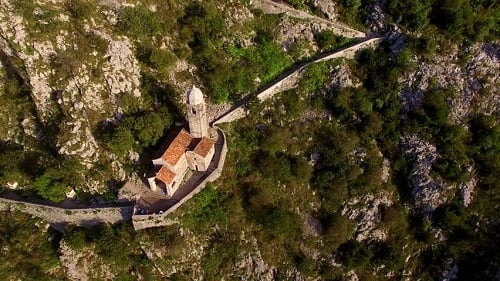
Our Lady of Health, source TO Kotor
The complex of the fortress is made of two parts, the first part is the wall with five bastions, located around the old core or “the heart” of the town. The second part is the wall on the east and the west side of the St Ivan’s mountain.
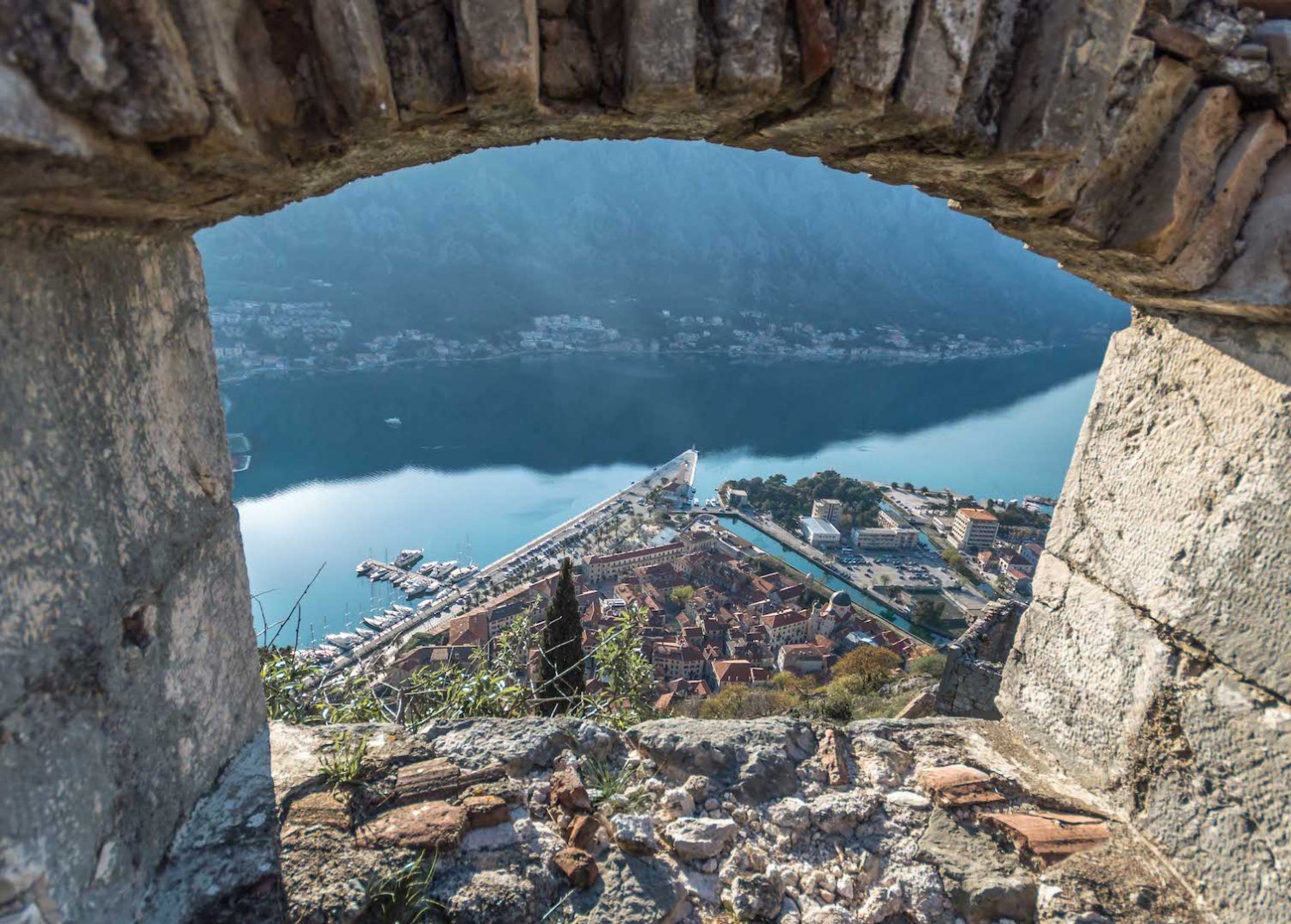 Saint Ivan Views, source TO Kotor
Saint Ivan Views, source TO KotorWhen you reach St Ivan, you will be able to see behind this fortress. For the adventurers, there is a marked hiking trail that leads all the way up to the Mount Lovcen, which is one of 5 national parks in Montenegro, with the highest Mausoleum in the world, built on the top of the mountain. The Mausoleum is a monumental grave to our bishop and ruler, Njegos, who asked to be burried here.
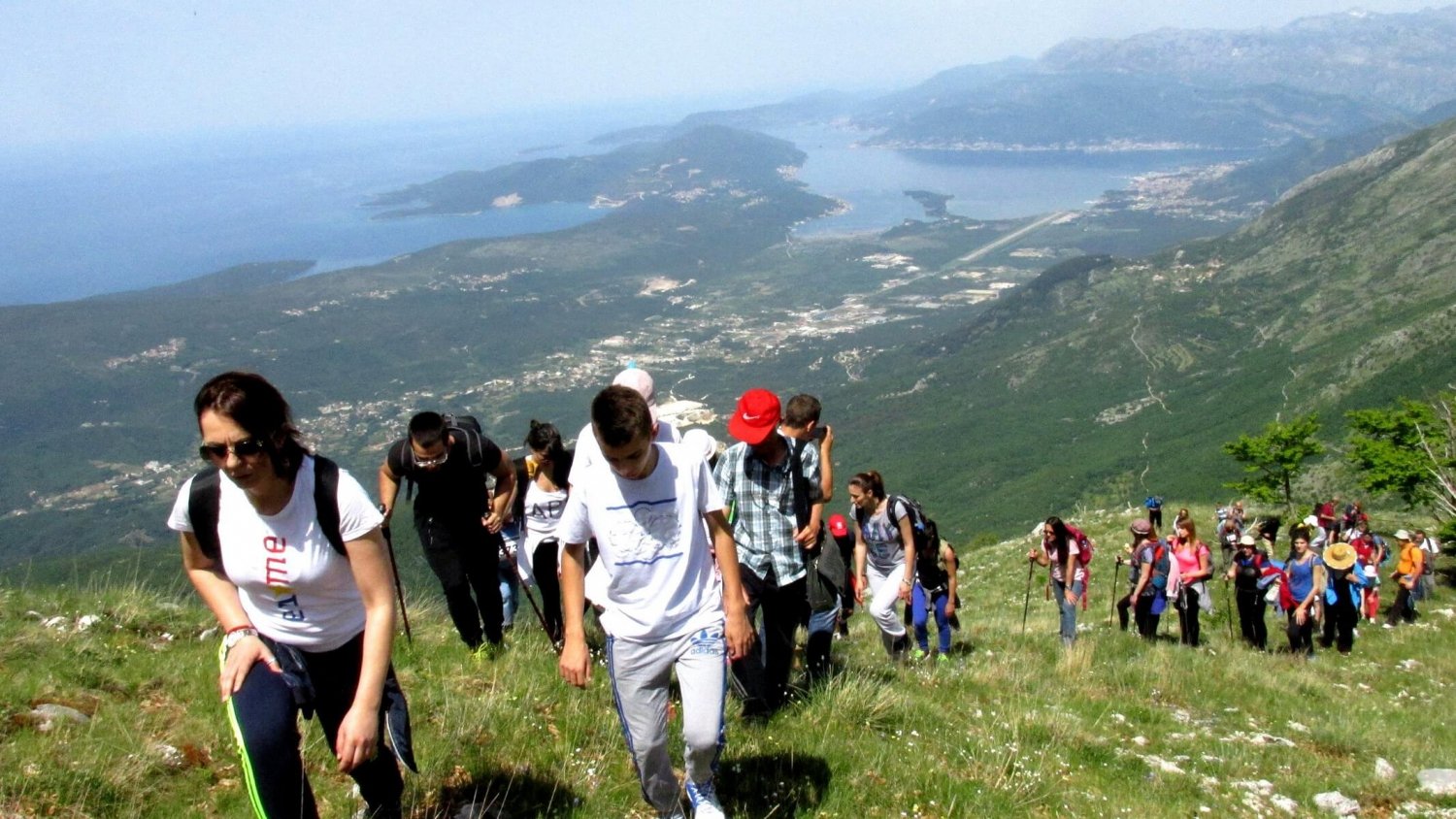 Hiking to Lovcen, BeActive Montenegro
Hiking to Lovcen, BeActive MontenegroWhen you decide hiking this fortress and beyond, we recommend you to take some sun cream with you, as the heat can burn your skin. We also recommend you to bring your camera for those breath-taking views, on every spot of the fortress!
THE CRUISING PORT
Cruising tourism is one of the largest growing tourism brunches in the world right now. Even though Montenegro’s largest harbour is Bar, Kotor has the biggest influence on the cruising tourism of our country.
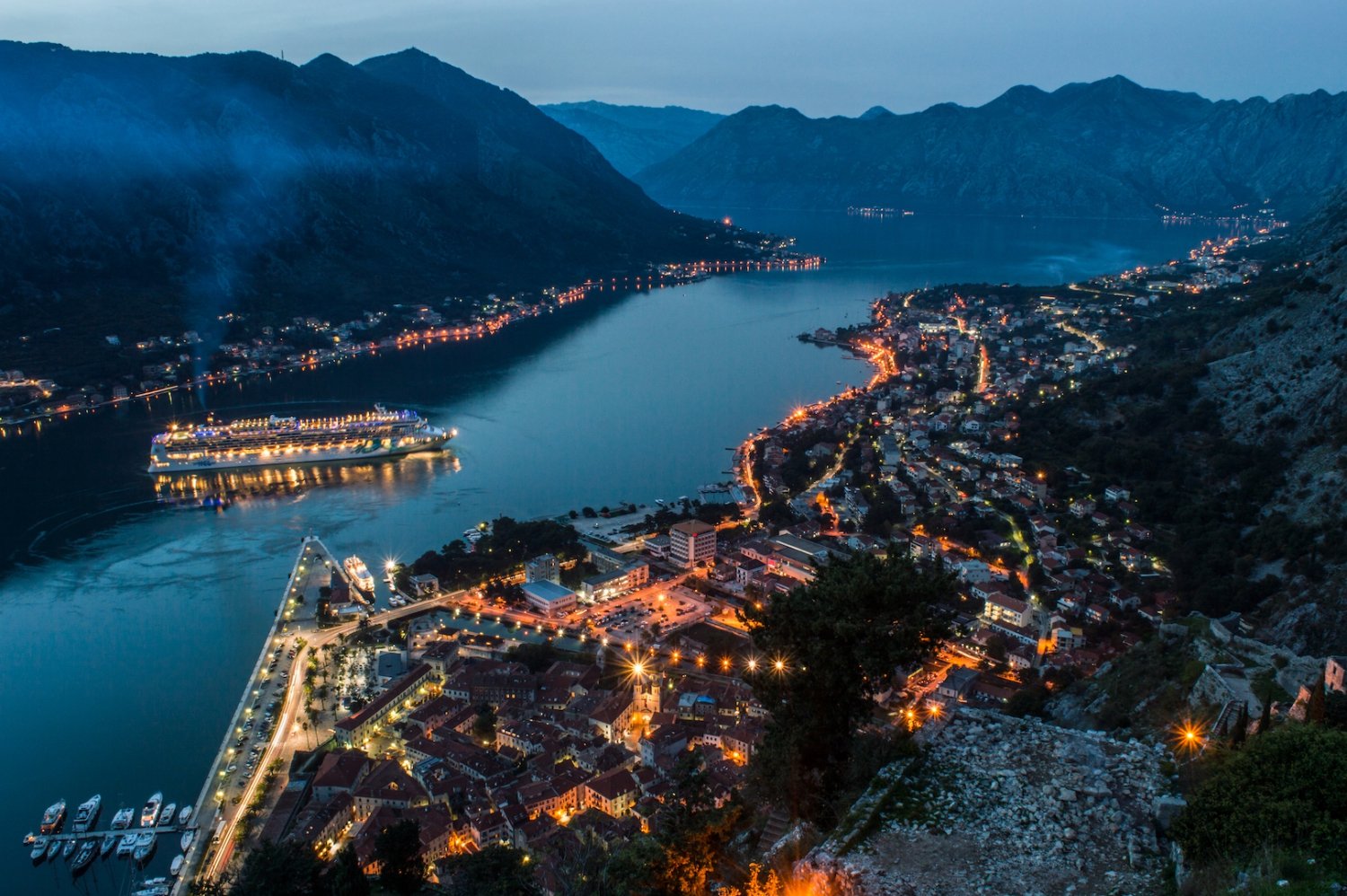 Kotor Panorama with the Cruise Ship in the Bay, source TO Kotor
Kotor Panorama with the Cruise Ship in the Bay, source TO KotorAs years passed, Kotor became important as one of the most popular European destination to visit. The growth shows it all as in the year 2007, Kotor was visited by 202 cruise ships and in 2017, 500 ships visited Kotor! Amazing growth in the period of 10 years, as the number of cruise ships that visited Kotor, doubled.
Kotor became the place where the most people from the region and the county start or finish their trip, according to last year’s poll. This town’s popularity is constantly increasing! In the year 2016, it was announced as a top destination to visit by the famous Lonely Planet guides.
Prestigious “Cruise Critic” listed Kotor among the five most visited ports in the western Mediterranean, last year, accompanied by Dubrovnik, Rhodes, Mykonos and Venice.
Not bad for our small but really important city of Kotor, right? :)



